#astor academy
Explore tagged Tumblr posts
Text
Dunno how to title this (T_T) BUT I decided to redesign my old redesigns of olive and kinu but with a plot now and then I remembered mandrake and man he does not get a lot of love does he?


So in this new version olive is tasked with infiltrating the school and keeping an eye on specific students who seem to be catching on to their plans even if by a little and they need to make sure they don’t find out any more.
Kinu, her cat, is also here.
After olive failed to stop the girls from finding out more about their plans mandrake ends up transferring in to supervise her and also stop the girls from advancing further no matter how trivial.
Transfer students are common in high guardian academy as they either come from other schools or transfer out to other schools, in order to differentiate students properly the transfer students have to wear a sash with their school color on it and their year character!
And um I think that’s it. OH besides form the fact that they have their secret little meetings with Astor and slime boy in one of their dorm rooms because ooo yes very evil let’s go give everyone food poisoning
#my art#high guardian spice fanart#high guardian spice#high guardian spice olive#high guardian spice kinu#high guardian spice mandrake#hgs redesign#ranting
35 notes
·
View notes
Text
Charlie Chaplin's Limelight opened at NYC's Astor Theatre & Trans-Lux 60th Street 72 years ago today on Oct 23, 1952; the film wasn't released in Los Angeles until 1972, winning Chaplin his only competitive Academy Award (original score), albeit the film was 20 years old.
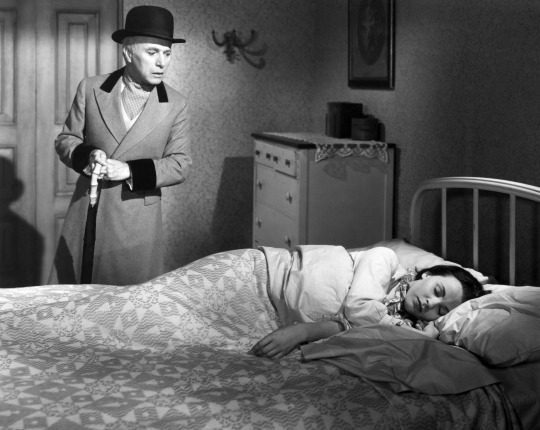

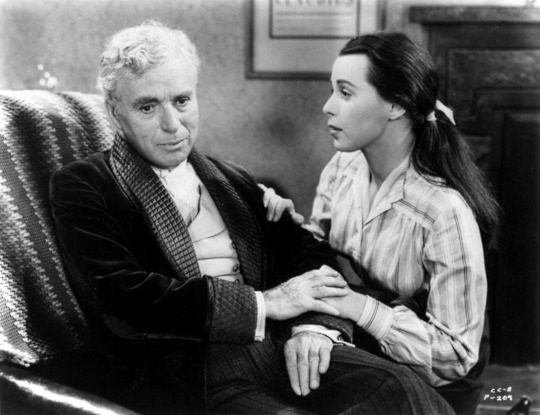
22 notes
·
View notes
Text
(Mostly) Lost, but Not Forgotten: Omar Khayyam (1923) / A Lover’s Oath (1925)

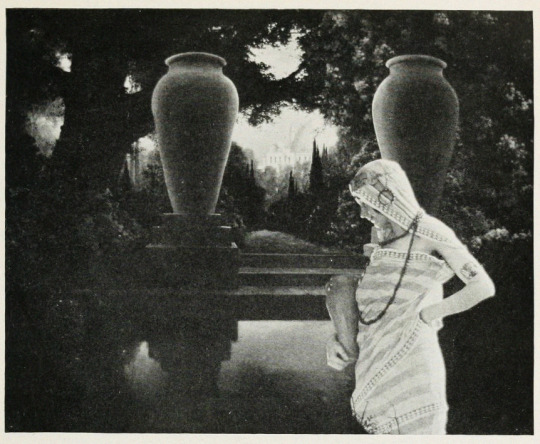
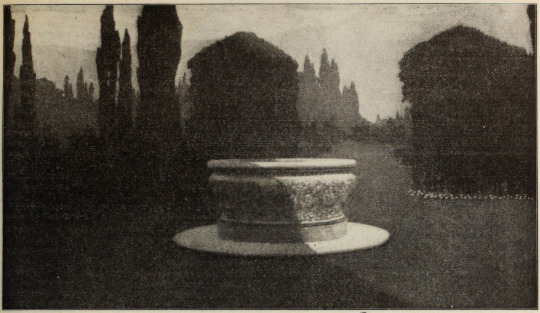

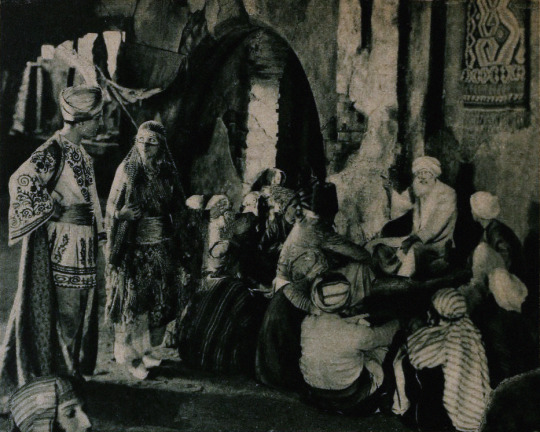


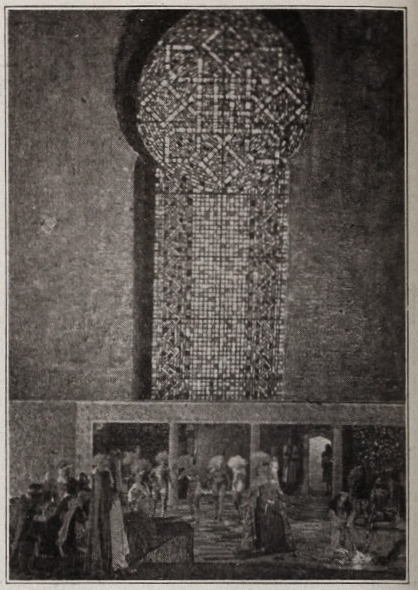


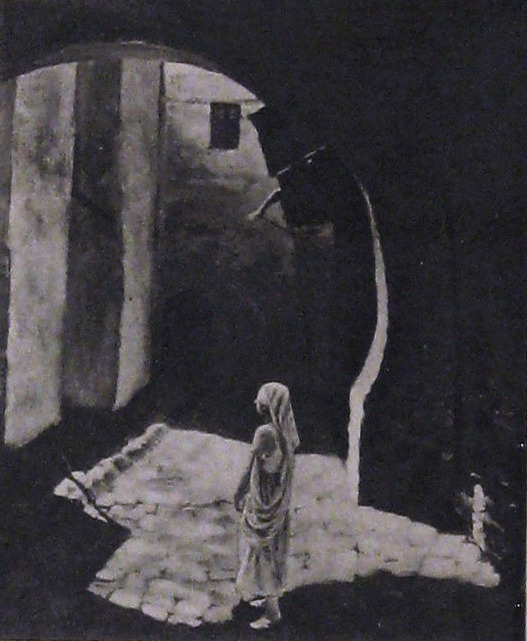

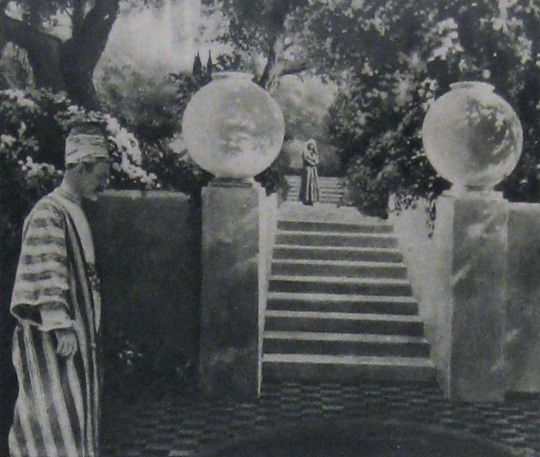
Alternate Titles: The Rubaiyat of Omar Khayyam, The Rubaiyat, Omar Khayyam, Omar
Direction: Ferdinand Pinney Earle; assisted by Walter Mayo
Scenario: Ferdinand P. Earle
Titles: Marion Ainslee, Ferdinand P. Earle (Omar), Louis Weadock (A Lover’s Oath)
Inspired by: The Rubaiyat of Omar Khayyam, as edited & translated by Edward FitzGerald
Production Manager: Winthrop Kelly
Camera: Georges Benoit
Still Photography: Edward S. Curtis
Special Photographic Effects: Ferdinand P. Earle, Gordon Bishop Pollock
Composer: Charles Wakefield Cadman
Editors: Arthur D. Ripley (The Rubaiyat of Omar Khayyam version), Ethel Davey & Ferdinand P. Earle (Omar / Omar Khayyam, the Director’s cut of 1922), Milton Sills (A Lover’s Oath)
Scenic Artists: Frank E. Berier, Xavier Muchado, Anthony Vecchio, Paul Detlefsen, Flora Smith, Jean Little Cyr, Robert Sterner, Ralph Willis
Character Designer: Louis Hels
Choreography: Ramon Novarro (credited as Ramon Samaniegos)
Technical Advisors: Prince Raphael Emmanuel, Reverend Allan Moore, Captain Dudley S. Corlette, & Captain Montlock or Mortlock
Studio: Ferdinand P. Earle Productions / The Rubaiyat, Inc. (Production) & Eastern Film Corporation (Distribution, Omar), Astor Distribution Corporation [States Rights market] (Distribution, A Lover’s Oath)
Performers: Frederick Warde, Edwin Stevens, Hedwiga Reicher, Mariska Aldrich, Paul Weigel, Robert Anderson, Arthur Carewe, Jesse Weldon, Snitz Edwards, Warren Rogers, Ramon Novarro (originally credited as Ramon Samaniegos), Big Jim Marcus, Kathleen Key, Charles A. Post, Phillippe de Lacy, Ferdinand Pinney Earle
Premiere(s): Omar cut: April 1922 The Ambassador Theatre, New York, NY (Preview Screening), 12 October 1923, Loew’s New York, New York, NY (Preview Screening), 2 February 1923, Hoyt’s Theatre, Sydney, Australia (Initial Release)
Status: Presumed lost, save for one 30 second fragment preserved by the Academy Film Archive, and a 2.5 minute fragment preserved by a private collector (Old Films & Stuff)
Length: Omar Khayyam: 8 reels , 76 minutes; A Lover’s Oath: 6 reels, 5,845 feet (though once listed with a runtime of 76 minutes, which doesn’t line up with the stated length of this cut)
Synopsis (synthesized from magazine summaries of the plot):
Omar Khayyam:
Set in 12th century Persia, the story begins with a preface in the youth of Omar Khayyam (Warde). Omar and his friends, Nizam (Weigel) and Hassan (Stevens), make a pact that whichever one of them becomes a success in life first will help out the others. In adulthood, Nizam has become a potentate and has given Omar a position so that he may continue his studies in mathematics and astronomy. Hassan, however, has grown into quite the villain. When he is expelled from the kingdom, he plots to kidnap Shireen (Key), the sheik’s daughter. Shireen is in love with Ali (Novarro). In the end it’s Hassan’s wife (Reicher) who slays the villain then kills herself.
A Lover’s Oath:
The daughter of a sheik, Shireen (Key), is in love with Ali (Novarro), the son of the ruler of a neighboring kingdom. Hassan covets Shireen and plots to kidnap her. Hassan is foiled by his wife. [The Sills’ edit places Ali and Shireen as protagonists, but there was little to no re-shooting done (absolutely none with Key or Novarro). So, most critics note how odd it is that all Ali does in the film is pitch woo, and does not save Shireen himself. This obviously wouldn’t have been an issue in the earlier cut, where Ali is a supporting character, often not even named in summaries and news items. Additional note: Post’s credit changes from “Vizier” to “Commander of the Faithful”]
Additional sequence(s) featured in the film (but I’m not sure where they fit in the continuity):
Celestial sequences featuring stars and planets moving through the cosmos
Angels spinning in a cyclone up to the heavens
A Potters’ shop sequence (relevant to a specific section of the poems)
Harem dance sequence choreographed by Novarro
Locations: palace gardens, street and marketplace scenes, ancient ruins
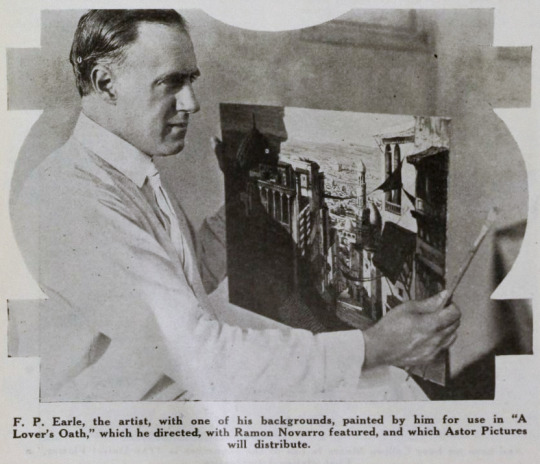
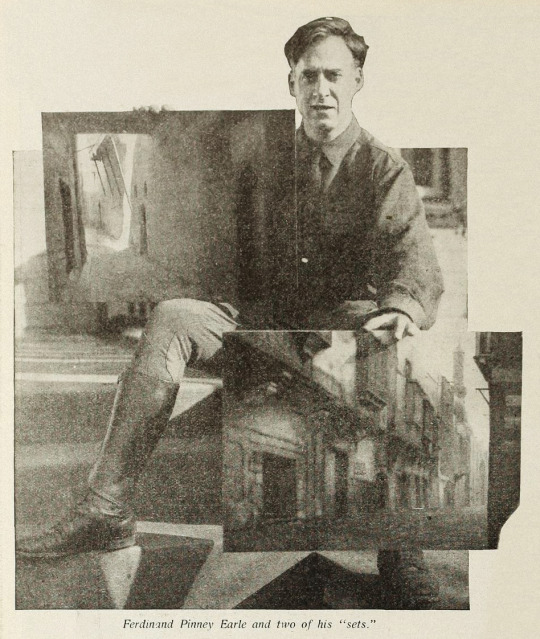
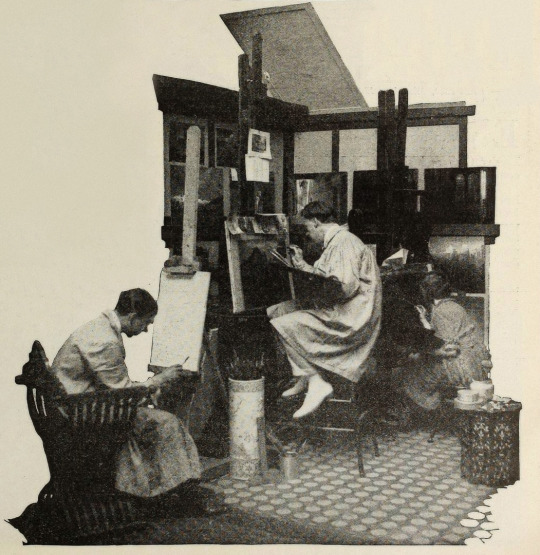


Points of Interest:
“The screen has been described as the last word in realism, but why confine it there? It can also be the last word in imaginative expression.”
Ferdinand P. Earle as quoted in Exhibitors Trade Review, 4 March 1922
The Rubaiyat of Omar Khayyam was a massive best seller. Ferdinand Pinney Earle was a classically trained artist who studied under William-Adolphe Bougueraeu and James McNeill Whistler in his youth. He also had years of experience creating art backgrounds, matte paintings, and art titles for films. Charles Wakefield Cadman was an accomplished composer of songs, operas, and operettas. Georges Benoit and Gordon Pollock were experienced photographic technicians. Edward S. Curtis was a widely renowned still photographer. Ramon Novarro was a name nobody knew yet—but they would soon enough.
When Earle chose The Rubaiyat as the source material for his directorial debut and collected such skilled collaborators, it seemed likely that the resulting film would be a landmark in the art of American cinema. Quite a few people who saw Earle’s Rubaiyat truly thought it would be:
William E. Wing writing for Camera, 9 September 1922, wrote:
“Mr. Earle…came from the world of brush and canvass, to spread his art upon the greater screen. He created a new Rubaiyat with such spiritual colors, that they swayed.” … “It has been my fortune to see some of the most wonderful sets that this Old Earth possesses, but I may truly say that none seized me more suddenly, or broke with greater, sudden inspiration upon the view and the brain, than some of Ferdinand Earle’s backgrounds, in his Rubaiyat. “His vision and inspired art seem to promise something bigger and better for the future screen.”
As quoted in an ad in Film Year Book, 1923:
“Ferdinand Earle has set a new standard of production to live up to.”
Rex Ingram
“Fifty years ahead of the time.”
Marshall Neilan
The film was also listed among Fritz Lang’s Siegfried, Chaplin’s Gold Rush, Fairbanks’ Don Q, Lon Chaney’s Phantom of the Opera and The Unholy Three, and Erich Von Stroheim’s Merry Widow by the National Board of Review as an exceptional film of 1925.
So why don’t we all know about this film? (Spoiler: it’s not just because it’s lost!)
The short answer is that multiple dubious legal challenges arose that prevented Omar’s general release in the US. The long answer follows BELOW THE JUMP!
Earle began the project in earnest in 1919. Committing The Rubaiyat to film was an ambitious undertaking for a first-time director and Earle was striking out at a time when the American film industry was developing an inferiority complex about the level of artistry in their creative output. Earle was one of a number of artists in the film colony who were going independent of the emergent studio system for greater protections of their creative freedoms.
In their adaptation of The Rubaiyat of Omar Khayyam, Earle and Co. hoped to develop new and perfect existing techniques for incorporating live-action performers with paintings and expand the idea of what could be accomplished with photographic effects in filmmaking. The Rubaiyat was an inspired choice. It’s not a narrative, but a collection of poetry. This gave Earle the opportunity to intersperse fantastical, poetic sequences throughout a story set in the lifetime of Omar Khayyam, the credited writer of the poems. In addition to the fantastic, Earle’s team would recreate 12th century Persia for the screen.
Earle was convinced that if his methods were perfected, it wouldn’t matter when or where a scene was set, it would not just be possible but practical to put on film. For The Rubaiyat, the majority of shooting was done against black velvet and various matte photography and multiple exposure techniques were employed to bring a setting 800+ years in the past and 1000s of miles removed to life before a camera in a cottage in Los Angeles.
Note: If you’d like to learn a bit more about how these effects were executed at the time, see the first installment of How’d They Do That.
Unfortunately, the few surviving minutes don’t feature much of this special photography, but what does survive looks exquisite:
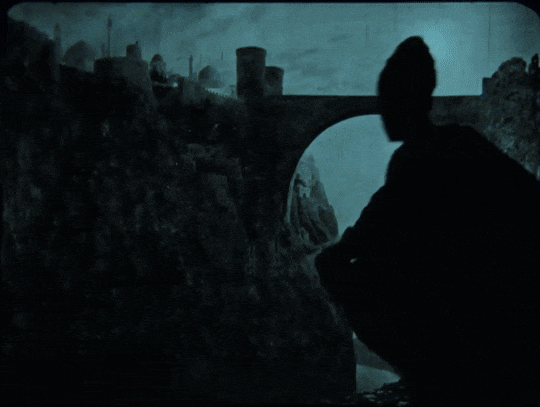
see all gifs here
Earle, knowing that traditional stills could not be taken while filming, brought in Edward S. Curtis. Curtis developed techniques in still photography to replicate the look of the photographic effects used for the film. So, even though the film hasn’t survived, we have some pretty great looking representations of some of the 1000s of missing feet of the film.

Nearly a year before Curtis joined the crew, Earle began collaboration with composer Charles Wakefield Cadman. In another bold creative move, Cadman and Earle worked closely before principal photography began so that the score could inform the construction and rhythm of the film and vice versa.
By the end of 1921 the film was complete. After roughly 9 months and the creation of over 500 paintings, The Rubaiyat was almost ready to meet its public. However, the investors in The Rubaiyat, Inc., the corporation formed by Earle to produce the film, objected to the ample reference to wine drinking (a comical objection if you’ve read the poems) and wanted the roles of the young lovers (played by as yet unknown Ramon Novarro and Kathleen Key) to be expanded. The dispute with Earle became so heated that the financiers absconded with the bulk of the film to New York. Earle filed suit against them in December to prevent them from screening their butchered and incomplete cut. Cadman supported Earle by withholding the use of his score for the film.
Later, Eastern Film Corp. brokered a settlement between the two parties, where Earle would get final cut of the film and Eastern would handle its release. Earle and Eastern agreed to change the title from The Rubaiyat of Omar Khayyam to simply Omar. Omar had its first official preview in New York City. It was tentatively announced that the film would have a wide release in the autumn.
However, before that autumn, director Norman Dawn launched a dubious patent-infringement suit against Earle and others. Dawn claimed that he owned the sole right to use multiple exposures, glass painting for single exposure, and other techniques that involved combining live action with paintings. All the cited techniques had been widespread in the film industry for a decade already and eventually and expectedly Dawn lost the suit. Despite Earle’s victory, the suit effectively put the kibosh on Omar’s release in the US.
Earle moved on to other projects that didn’t come to fruition, like a Theda Bara film and a frankly amazing sounding collaboration with Cadman to craft a silent-film opera of Faust. Omar did finally get a release, albeit only in Australia. Australian news outlets praised the film as highly as those few lucky attendees of the American preview screenings did. The narrative was described as not especially original, but that it was good enough in view of the film’s artistry and its imaginative “visual phenomena” and the precision of its technical achievement.
One reviewer for The Register, Adelaide, SA, wrote:
“It seems almost an impossibility to make a connected story out of the short verse of the Persian of old, yet the producer of this classic of the screen… has succeeded in providing an entertainment that would scarcely have been considered possible. From first to last the story grips with its very dramatic intensity.”
While Omar’s American release was still in limbo, “Ramon Samaniegos” made a huge impression in Rex Ingram’s Prisoner of Zenda (1922, extant) and Scaramouche (1923, extant) and took on a new name: Ramon Novarro. Excitement was mounting for Novarro’s next big role as the lead in the epic Ben-Hur (1925, extant) and the Omar project was re-vivified.
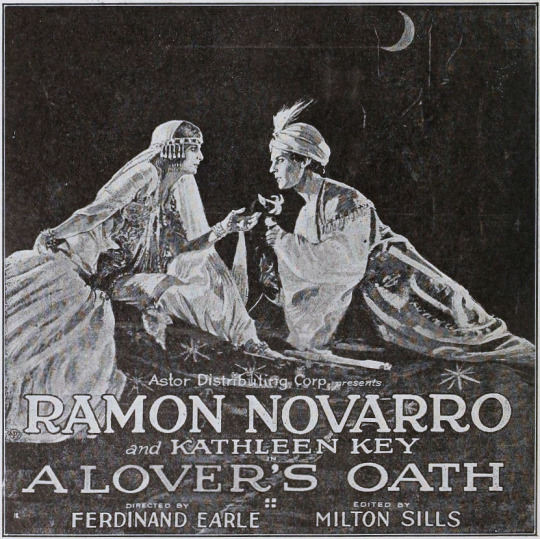
A new company, Astor Distribution Corp., was formed and purchased the distribution rights to Omar. Astor hired actor (note, not an editor) Milton Sills to re-cut the film to make Novarro and Key more prominent. The company also re-wrote the intertitles, reduced the films runtime by more than ten minutes, and renamed the film A Lover’s Oath. Earle had moved on by this point, vowing to never direct again. In fact, Earle was indirectly working with Novarro and Key again at the time, as an art director on Ben-Hur!
Despite Omar’s seemingly auspicious start in 1920, it was only released in the US on the states rights market as a cash-in on the success of one of its actors in a re-cut form five years later.
That said, A Lover’s Oath still received some good reviews from those who did manage to see it. Most of the negative criticism went to the story, intertitles, and Sills’ editing.
What kind of legacy could/should Omar have had? I’m obviously limited in my speculation by the fact that the film is lost, but there are a few key facts about the film’s production, release, and timing to consider.
The production budget was stated to be $174,735. That is equivalent to $3,246,994.83 in 2024 dollars. That is a lot of money, but since the production was years long and Omar was a period film set in a remote locale and features fantastical special effects sequences, it’s a modest budget. For contemporary perspective, Robin Hood (1922, extant) cost just under a million dollars to produce and Thief of Bagdad (1924, extant) cost over a million. For a film similarly steeped in spectacle to have nearly 1/10th of the budget is really very noteworthy. And, perhaps if the film had ever had a proper release in the US—in Earle’s intended form (that is to say, not the Sills cut)—Omar may have made as big of a splash as other epics.
It’s worth noting here however that there are a number of instances in contemporary trade and fan magazines where journalists off-handedly make this filmmaking experiment about undermining union workers. Essentially implying that that value of Earle’s method would be to continue production when unionized workers were striking. I’m sure that that would absolutely be a primary thought for studio heads, but it certainly wasn’t Earle’s motivation. Often when Earle talks about the method, he focuses on being able to film things that were previously impossible or impracticable to film. Driving down filming costs from Earle’s perspective was more about highlighting the artistry of his own specialty in lieu of other, more demanding and time-consuming approaches, like location shooting.
This divide between artists and studio decision makers is still at issue in the American film and television industry. Studio heads with billion dollar salaries constantly try to subvert unions of skilled professionals by pursuing (as yet) non-unionized labor. The technical developments of the past century have made Earle’s approach easier to implement. However, just because you don’t have to do quite as much math, or time an actor’s movements to a metronome, does not mean that filming a combination of painted/animated and live-action elements does not involve skilled labor.
VFX artists and animators are underappreciated and underpaid. In every new movie or TV show you watch there’s scads of VFX work done even in films/shows that have mundane, realistic settings. So, if you love a film or TV show, take the effort to appreciate the work of the humans who made it, even if their work was so good you didn’t notice it was done. And, if you’ve somehow read this far, and are so out of the loop about modern filmmaking, Disney’s “live-action” remakes are animated films, but they’ve just finagled ways to circumvent unions and low-key delegitimize the skilled labor of VFX artists and animators in the eyes of the viewing public. Don’t fall for it.
VFX workers in North America have a union under IATSE, but it’s still developing as a union and Marvel & Disney workers only voted to unionize in the autumn of 2023. The Animation Guild (TAG), also under the IATSE umbrella, has a longer history, but it’s been growing rapidly in the past year. A strike might be upcoming this year for TAG, so keep an eye out and remember to support striking workers and don’t cross picket lines, be they physical or digital!
Speaking of artistry over cost-cutting, I began this post with a mention that in the early 1920s, the American film industry was developing an inferiority complex in regard to its own artistry. This was in comparison to the European industries, Germany’s being the largest at the time. It’s frustrating to look back at this period and see acceptance of the opinion that American filmmakers weren’t bringing art to film. While yes, the emergent studio system was highly capitalistic and commercial, that does not mean the American industry was devoid of home-grown artists.
United Artists was formed in 1919 by Douglas Fairbanks, Charlie Chaplin, Mary Pickford, and D.W. Griffith precisely because studios were holding them back from investing in their art—within the same year that Earle began his Omar project. While salaries and unforgiving production schedules were also paramount concerns in the filmmakers going independent, a primary impetus was that production/distribution heads exhibited too much control over what the artists were trying to create.
Fairbanks was quickly expanding his repertoire in a more classical and fantastic direction. Cecil B. DeMille made his first in a long and very successful string of ancient epics. And the foreign-born children of the American film industry, Charlie Chaplin, Rex Ingram, and Nazimova, were poppin’ off! Chaplin was redefining comedic filmmaking. Ingram was redefining epics. Nazimova independently produced what is often regarded as America’s first art film, Salome (1923, extant), a film designed by Natacha Rambova, who was *gasp* American. Earle and his brother, William, had ambitious artistic visions of what could be done in the American industry and they also had to self-produce to get their work done.
Meanwhile, studio heads, instead of investing in the artists they already had contracts with, tried to poach talent from Europe with mixed success (in this period, see: Ernst Lubitsch, F.W. Murnau, Benjamin Christensen, Mauritz Stiller, Victor Sjöström, and so on). I’m in no way saying it was the wrong call to sign these artists, but all of these filmmakers, even if they found success in America, had stories of being hired to inject the style and artistry that they developed in Europe into American cinema, and then had their plans shot down or cut down to a shadow of their creative vision. Even Stiller, who tragically died before he had the opportunity to establish himself in the US, faced this on his first American film, The Temptress (1926, extant), on which he was replaced. Essentially, the studio heads’ actions were all hot air and spite for the filmmakers who’d gone independent.

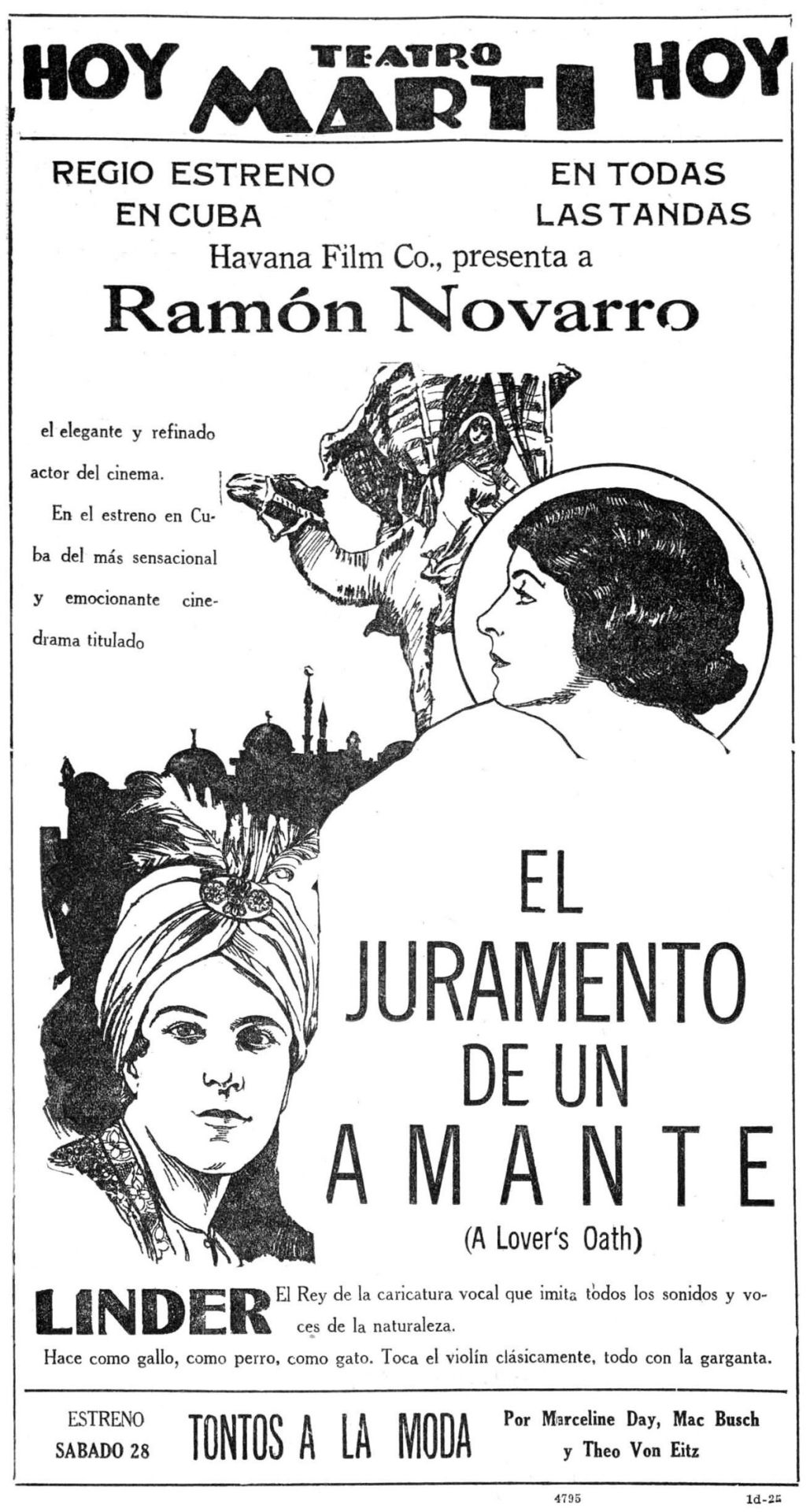
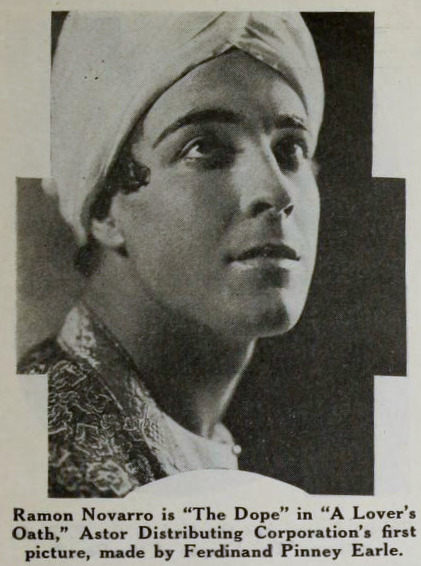
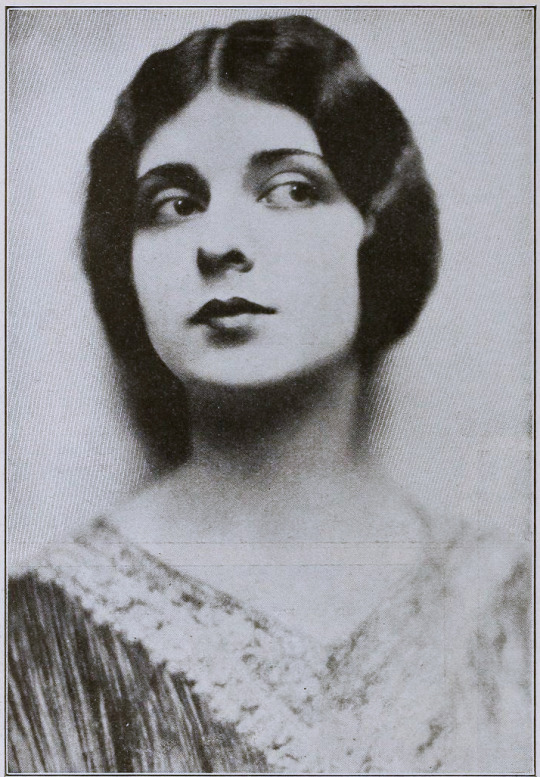
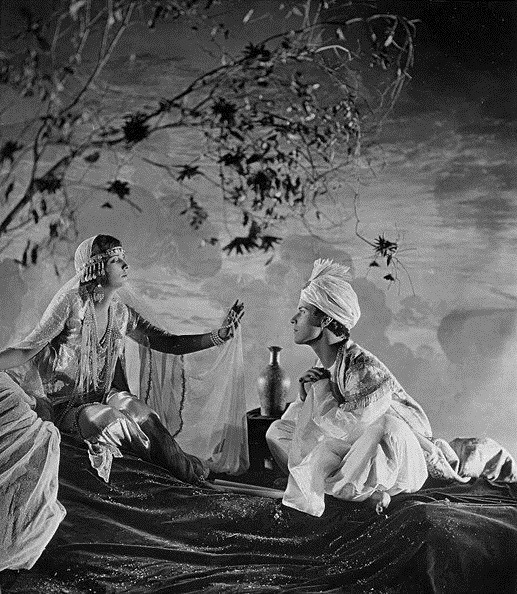
Finally I would like to highlight Ferdinand Earle’s statement to the industry, which he penned for from Camera in 14 January 1922, when his financial backers kidnapped his film to re-edit it on their terms:
MAGNA CHARTA
Until screen authors and producers obtain a charter specifying and guaranteeing their privileges and rights, the great slaughter of unprotected motion picture dramas will go merrily on.
Some of us who are half artists and half fighters and who are ready to expend ninety per cent of our energy in order to win the freedom to devote the remaining ten per cent to creative work on the screen, manage to bring to birth a piteous, half-starved art progeny.
The creative artist today labors without the stimulus of a public eager for his product, labors without the artistic momentum that fires the artist’s imagination and spurs his efforts as in any great art era.
Nowadays the taint of commercialism infects the seven arts, and the art pioneer meets with constant petty worries and handicaps.
Only once in a blue moon, in this matter-of-fact, dollar-wise age can the believer in better pictures hope to participate in a truely [sic] artistic treat.
In the seven years I have devoted to the screen, I have witnessed many splendid photodramas ruined by intruding upstarts and stubborn imbeciles. And I determined not to launch the production of my Opus No. 1 until I had adequately protected myself against all the usual evils of the way, especially as I was to make an entirely new type of picture.
In order that my film verison [sic] of the Rubaiyat of Omar Khayyam might be produced under ideal conditions and safeguarded from intolerable interferences and outside worries, I entered into a contract with the Rubaiyat, Inc., that made me not only president of the corporation and on the board of directors, but which set forth that I was to be author, production manager, director, cutter and film editor as well as art director, and that no charge could be made against the production without my written consent, and that my word was to be final on all matters of production. The late George Loane Tucker helped my attorney word the contract, which read like a splendid document.
Alas, I am now told that only by keeping title to a production until it is declared by yourself to be completed is it safe for a scenario writer, an actor or a director, who is supposedly making his own productions, to contract with a corporation; otherwise he is merely the servant of that corporation, subject at any moment to discharge, with the dubious redress of a suit for damages that can with difficulty be estimated and proven.
Can there be any hope of better pictures as long as contracts and copyrights are no protection against financial brigands and bullies?
We have scarcely emerged from barbarism, for contracts, solemnly drawn up between human beings, in which the purposes are set forth in the King’s plainest English, serve only as hurdles over which justice-mocking financiers and their nimble attorneys travel with impunity, riding rough shod over the author or artist who cannot support a legal army to defend his rights. The phrase is passed about that no contract is invioliable [sic]—and yet we think we have reached a state of civilization!
The suit begun by my attorneys in the federal courts to prevent the present hashed and incomplete version of my story from being released and exhibited, may be of interest to screen writers. For the whole struggle revolves not in the slightest degree around the sanctity of the contract, but centers around the federal copyright of my story which I never transferred in writing otherwise, and which is being brazenly ignored.
Imagine my production without pictorial titles: and imagine “The Rubaiyat” with a spoken title as follows, “That bird is getting to talk too much!”—beside some of the immortal quatrains of Fitzgerald!
One weapon, fortunately, remains for the militant art creator, when all is gone save his dignity and his sense of humor; and that is the rapier blade of ridicule, that can send lumbering to his retreat the most brutal and elephant-hided lord of finance.
How edifying—the tableau of the man of millions playing legal pranks upon men such as Charles Wakefield Cadman, Edward S. Curtis and myself and others who were associated in the bloody venture of picturizing the Rubaiyat! It has been gratifying to find the press of the whole country ready to champion the artist’s cause.
When the artist forges his plowshare into a sword, so to speak, he does not always put up a mean fight.
What publisher would dare to rewrite a sonnet of John Keats or alter one chord of a Chopin ballade?
Creative art of a high order will become possible on the screen only when the rights of established, independent screen producers, such as Rex Ingram and Maurice Tourneur, are no longer interferred with and their work no longer mutilated or changed or added to by vandal hands. And art dramas, conceived and executed by masters of screen craft, cannot be turned out like sausages made by factory hands. A flavor of individuality and distinction of style cannot be preserved in machine-made melodramas—a drama that is passed from hand to hand and concocted by patchworkers and tinkerers.
A thousand times no! For it will always be cousin to the sausage, and be like all other—sausages.
The scenes of a master’s drama may have a subtle pictorial continuity and a power of suggestion quite like a melody that is lost when just one note is changed. And the public is the only test of what is eternally true or false. What right have two or three people to deprive millions of art lovers of enjoying an artist’s creation as it emerged from his workshop?
“The Rubaiyat” was my first picture and produced in spite of continual and infernal interferences. It has taught me several sad lessons, which I have endeavored in the above paragraphs to pass on to some of my fellow sufferers. It is the hope that I am fighting, to a certain extent, their battle that has given me the courage to continue, and that has prompted me to write this article. May such hubbubs eventually teach or inforce a decent regard for the rights of authors and directors and tend to make the existence of screen artisans more secure and soothing to the nerves.
FERDINAND EARLE.
---
☕Appreciate my work? Buy me a coffee! ☕
Transcribed Sources & Annotations over on the WMM Blog!
See the Timeline for Ferdinand P. Earle's Rubaiyat Adaptation
#1920s#1923#1925#omar khayyam#ferdinand pinney earle#ramon novarro#independent film#american film#silent cinema#silent era#silent film#classic cinema#classic movies#classic film#film history#history#Charles Wakefield Cadman#cinematography#The Rubaiyat#cinema#film#lost film
52 notes
·
View notes
Text

Per Nørgård
Danish composer driven by the concept of musical metamorphosis and a renowned symphonist
“I don’t know where the lyrical element comes from,” the Danish composer Per Nørgård, who has died aged 92, once remarked. “I can’t construct the lyrical element. It is like when you stick your head out of the window on a spring morning and can simply sense the scent of flowers in the air. It can’t be controlled. In a way, the lyrical element is the sensual side of existence, which always comes as a gift.”
One of the most lyrical expressions of that gift among Nørgård’s 400 works was in the finale of his small-orchestral diptych Voyage Into the Golden Screen, composed in 1968. Ironically, its free-flowing melody derived not from chance “scenting of [music] in the air”, but rather the technical dictates of Nørgård’s then newly formulated “infinity series”, where the notes follow mathematically from the proportions of the “golden ratio” and the Fibonacci series: a telling musical counterpart to the prevailing Scandinavian concern, across all the arts at the time, of design-driven expression.
As a young man, taught by the great Danish symphonist Vagn Holmboe at the Royal Danish Conservatory of Music, Nørgård had become fascinated with the music of Sibelius and the underlying concept of musical metamorphosis, where themes and motifs gradually evolve into new entities.
youtube
However, the infinity series became a primary building block of Nørgård’s music, whether laid out straightforwardly, as in the Second Symphony (1970), or as an unlimited thematic reservoir in his operas (including Siddhartha, 1974-79, and The Divine Circus, 1983), symphonies, 13 concertos – including two for percussion, the first, For a Change (1982-83), based on the Chinese “wisdom book” I Ching, the second, Bach to the Future (1997), reworking three Bach preludes – and a large body of vocal and chamber music, including 10 string quartets.
The end results sometimes baffled early audiences; Kalendermusik (1970), written to accompany the test card on Danish television, was broadcast until audience protests prompted its removal after a few months; others proved contentious through their complex, seemingly chaotic inspirations and textures, as with the choral triptych Wie ein Kind (1979-80) and the Fourth Symphony (1981), two of a group of works derived from the ideas of the Swiss artist and psychiatric patient Adolf Wölfli. At other times, the results could be disarmingly spare in texture, for example in his music for the Oscar-winning film Babette’s Feast (1987).
Nørgård was born in Gentofte, on the northern edge of Copenhagen, to the tailor Erhardt Nørgård and his wife, Emmely (nee Christensen), who ran a business specialising in wedding attire. Per loved to draw and with his elder brother, Bent, made up cartoon stories. It was a musical family (Erhardt played the accordion) and both brothers studied the piano, Per from the age of seven.

His innate musical ability showed early and he was admitted as a boy chorister into the Copenhagen Municipal Choral School in 1942 before going to Frederiksberg grammar school. By 17 he had set his mind on becoming a composer, producing his first work, Sonata capricciosa, in 1949.
Holmboe took him on as a private pupil in 1950-51, before becoming one of his teachers at the conservatory in Copenhagen, where Nørgård studied between 1952 and 1955. Following graduation, the conservatory staged a well-received all-Nørgård concert in January 1956.
By the end of that month Nørgård had married, been awarded a Lili Boulanger award, and moved with his young wife, the singer, dancer and ethnomusicologist Anelise Brix Thomsen, to Paris to study with Nadia Boulanger, whose former pupils included Aaron Copland, Roy Harris and Astor Piazzolla.
Returning to Denmark in 1957, he began teaching at the Funen Academy of Music in Odense (until 1961), writing for the Danish daily newspaper Politiken (1958-62) and, from 1960 to 1965, teaching at the conservatory in Copenhagen, where one of his pupils was Carl Davis. Finding the atmosphere too conservative, he moved – taking his students with him – to the Royal Academy of Music in Aarhus. There, he taught some of the most important Nordic composers of the ensuing generations, including Hans Abrahamsen, Hans Gefors and Bent Sørensen.
youtube
His own music extended his influence much further, to composers across Europe from Thomas Adès to Wolfgang Rihm to the Finnish composer-conductor Esa-Pekka Salonen. Salonen conducted the premiere of Nørgård’s Fifth Symphony in 1990 at a concert featuring the Fifth Symphonies of Sibelius and Nielsen, to celebrate their 125th anniversaries.
Nørgård was the recipient of many awards and honours, including the Nordic Council music prize (1974, for his opera Gilgamesh), the Léonie Sonning music prize (1996) and the Wihuri Sibelius prize (2006). In 2005 his glorious, expansive choral-and-orchestral Third Symphony (1972-75) – which was given its UK premiere only at the 2018 BBC Proms – was incorporated into Denmark’s official Culture Canon.
He received the Marie-Josée Kravis prize for new music in 2014; the following year the Vienna Philharmonic’s recording of Symphonies Nos 1 and 8, conducted by Sakari Oramo, won the Gramophone award for contemporary music; and in 2016 he was awarded the Ernst von Siemens Music prize for lifelong service to music.
Nørgård’s marriage to Anelise ended in divorce in 1965; he is survived by their children, Jeppe and Ditte. In 1966 he married Helle Rahbæk Hansen; she died in 2022.
🔔 Per Nørgård, composer and teacher, born 13 July 1933; died 28 May 2025
Daily inspiration. Discover more photos at Just for Books…?
4 notes
·
View notes
Note
1) What was MC's mother volery in the Academy ? 2) What's Droz's volery (when it's not Beizen Hawk with MC) ? 3) How old are Phoenix (if it's not spoilery), Sebastian, Astor, Astoria, Amelia, Chase and Fuchsia ? 4) What are the ROs' heights (tall, average, small) ? Fuchsia and Chase seem tall (?), what about the others ? 5) Do you have Phoenix's, Chris', Karla's, Hilda's and Jonah/Columba's moodboards/introductions ? 2/3
It's always the same volery as MC! If its Swan: she was also a Holy Songbird.
I still have to decide, it depends on MCs volery but most often its Raven (cause he wants to protect MC).
Phoenix is.... over 200 35 years old. Basti is 20 (baby vamp). Astor and Astoria are both 19. Amelia and Chase are 18, Fuchsia 20.
posted this somewhere here, but a few new ROs are there too. Tall: Fuchsia, Chase (lanky af), Astoria, Marter (is really tall: almost 2 meters). Average: Astor, Hilda, Karla/Chris, Droz, Jonah/Columba, E. Falkenflug. Small: Marcel, Amelia.
I still have to do them!
15 notes
·
View notes
Text
SHI BACKSTORIES #8 ~ FLEUR JUSTE

TW: Attempted suicide
Fleur Juste was born at a time in which women were not respected in the courtroom. Her father was a prestigious lawyer and her mother was a passionate activist. Her parents’ stances on life would go on to shape her into a determined, respectable person with strong morals and a taste for justice. As she grew up, she was dead set on one goal: Fleur wanted to be a lawyer.
At the age of 15, Fleur attempted to take law classes. However, she was denied due to her gender. Unable to do anything about the rejection, she left, but not without her ever stronger desire to pursue what she dreamed of. Following her denial, she threw herself into studying law, staying up for hours each night to study each and every page of any book she could get her hands on. Unable to get any education in a school, she was personally taught by her father. Never skipping one day of training, she listened attentively, practicing her arguments and techniques whenever she wasn’t actively in a lesson. By age 16, she was more educated than most actual students. Knowing her skill, she applied to the prestigious school specializing in law, Arcadia Academy. However, yet again, she was denied because of her gender. This time, Fleur could feel something burning inside of her. She knew what she was capable of, so she decided to go up to the school herself and argue her case, as any dedicated lawyer would.
The day following her rejection, she approached the front desk of Arcadia, notebooks and law books in hand. She had done research the night prior, discovering the name of the building’s headmaster as well as the skills and qualifications required to attend. Confidently and stoically speaking to the receptionist, she asked for a direct meeting with Mr. Astor, the aforementioned headmaster. The woman behind the counter, looking at her with a scowl, begrudgingly got up from her desk to fetch Astor. After a long while, Fleur was called back to Astor’s office. As Fleur sat down in the large, leather chair in front of the desk, she laid down her books and have the headmaster a sharp look. “Fleur Juste, daughter of Louis Juste and future artourney. I presume you’re the prestigious Mr. Astor, yes?” Fleur asked, reaching out her hand for a handshake. Astor shook her hand. He was an older man with a thick brow, constantly furrowed yet everlastingly attentive. “Yes ma’am, please state your business”. Fleur took a deep breath and looked back up with the same sharp, determined look she seemed to always have. “This school only accepts the most talented and dedicated aspiring lawyers in all of Farras, and I believe that I am exactly fit for thi-“ She was interrupted. “And you applied, didn’t you? I remember reviewing the application of a Fleur Juste. Your application was perfect, but I’m afraid we can’t accept you. You’re a wo-“ This time, Fleur interrupted him. “I’m well aware that I’m a woman, thank you. But you must understand something, Mr. Astor. Why does it matter what I am? In a courtroom, everyone is equal, are they not? I’d have you know, I’ve reviewed your application requirements. I have much more training than the majority of students in your school. You DID read the list of my qualifications didn’t you? If you are going to deny a person the opportunity to defend the defenseless because of something as simple as a skirt, then you are disobeying the very foundations of the court that you pledge to uphold. If equal standing is so very important in the courtroom, then you should have no giving me as fair of a chance as any other student in this school, Mr. Astor”. She spoke confidently and firmly, with a tone of voice fit of a professional attorney. Astor looked up at Fleur who was now standing her hands on his desk. After a long silence, he finally spoke. “Show me your application, Ms. Juste”. Her face not breaking, Fleur slid her papers over to him. One by one, Astor reviewed her qualifications as a small smile appeared on his face. “I will admit, you were right about having more qualifications than most of my students, as well as the fact that you trained under Louis Juste… But— no formal education? Why’s that?” She sighed. “Just as you stated sir, I’m a woman. They won’t let me attend”. Mr. Astor chuckled to himself. “You’ve already displayed your argumentative capabilities and showed me a most impressive application”. He slid her a turned over piece of paper. “If you’re going to attend Arcadia, you better do something good with yourself, understood?” Fleur smiled as she read the paper. It was an acceptance letter to Arcadia Academy. “Now, I’m well aware of what you come from. As the only female student here, it’s going to be tough. I expect that you can work through that”. She shook his hand. “Of course, Mr. Astor”. The two smiled at each other as she turned around. “Oh, I must not forget, may I receive a schedule?”
That night, Fleur prepared everything she had. Textbooks, notebooks, and pens, all went into a neatly arranged bag. She smiled to herself as she reflected on the events of her meeting with Astor. She had initially been surprised when he stated that he had to reject her because of her gender, as in all of her research, he seemed like a more equal standing man. Fleur suspected that it hadn’t actually been him who read over her application, as she was sure if he read it, she would have been offered a bit more opportunity. As she settled down her thoughts, she laid in her bed, awaiting the day coming. She would be attending Arcadia Academy.
Finally, the day arrived. Putting on her most professional clothes, Fleur made her way to the academy. As she sat down for class, the others stared at her in bewilderment and disbelief. As Astor had said, she was the only female student attending. As the day went on, Fleur persisted bravely. All until her criminal law class. As she raised her hand to answer a question, her professor told her to put her hand down, as she should just sit and listen, not participate. Hearing this, Fleur continued her confident persistence. As a student as capable as anyone else, she was not going to be disrespected. She answered fhe question anyway, getting it perfectly correct. As her professor scowled at her, he was forced to admit she was spot on. Day after day, her educated at Arcadia continued. Time and time again, she would have to prove her standing as an equal student in the classroom, some acts successful and some not. By the end of the first semester, she was known as a force to be reckoned with: Fleur Juste, the only woman at Arcadia Academy, a confident woman who would not accept the intolerance of those around her.
One day, Fleur was walking down the steps of Arcadia to return home after a long day. At the end of the steps, she spotted a man sitting down, his head in his hands. He looked to be poor, his clothes tattered and face dirty. As she stared at him, she noticed the other students as they walked past him with no care, some even making faces at the man. Sitting down beside him, Fleur offered her compassion. “Good afternoon sir, is something the matter?” The man looked up at her. “W-well ma’am, you see—“ He took his ripped hat off of his head and held it gently in front of him. “I was accused of something I didn’t do— and I’m not going to be able to prove myself. I can’t afford a lawyer and they will never believe my word over my accuser’s…” Fleur looked at the man with pity. She sympathized with him, he was someone facing injustice in a world in which he needed to prove himself to. “Well,” she spoke, “My name is Fleur Juste. You’re sitting on the steps of the Arcadia Academy, a law school. I study here. If you could tell me the details of your case, I may be able to try my hardest to defend you”. The man’s face lit up as he began to explain everything, words spilling out of his mouth like water rapidly pouring from a faucet. Fleur listened attentively to every word as she pondered the facts of what he was saying. Just from his testimony, she could tell that there were clear holes in his accuser’s story. The man was being accused of murdering a man of higher status’ wife. As he finished blurting out his words, Fleur offered her help. Happily accepting, the two exchanged addresses so they could write to each other about the coming case. As they were about to part ways, Fleur asked: “Before I take my leave, what is your name? I need to address the letters to someone”. The man, already on his way, called back: “Michael Lapier!”
Over the coming weeks, more information and evidence would be revealed through Michael and Fleur’s letters and meetings. As the facts were presented, Fleur began to consider the case one with a clear cut answer: one of Michael’s innocence. A month after their initial conversation on the steps of Arcadia, a trial date was set: March 17, 1937. Day by day, piece of evidence after peace of evidence, the date grew closer. Soon, it was time for Fleur to be established as Michael’s official lawyer. Despite her confidence, there was some doubt in her. She was not only a woman, but a minor. She knew she wouldn’t be respected on stand, but would she even be allowed in the courtroom? Her mind raced as she brought her fears to her father. As she explained, he said something Fleur would never forget. “So, what are you going to do? You know this man is innocent, and you can do something about it. Your evidence is together and your defense is air tight, any jury with a touch of sanity would take it into account. As an attorney, it is your duty to do everything you can to save this man. It doesn’t matter what you need to do, what matters is that someone’s life is on the line”. Her father was exactly right. She needed to confront this case head on, murder was an offense worthy of the death penalty. If Michael were to be convicted, he would be killed. Fleur needed to act.
As quickly as the entire ordeal began, the day of the trial had already arrived. Bringing along her prepared evidence and a terrified Michael Lapier, Fleur stepped into the courtroom with her usual confident demeanor. The event seemed to be a spectacle, with people from all over the community watching from the stands, Fleur recognized a few students from Arcadia, but someone stood out the most: Mr. Astor. As Fleur stepped up to the podium, he gave her a respectful nod. Taking her seat, a man in the jury hollered: “You’re kidding me, you’re KIDDING ME! This WOMAN is going to be defending this scumbag?! HAH-! IF ANYONE THOUGHT HE EVEN HAD A SLIGHT CHANCE BEFORE WE SAW ALL THIS, YOU’D BETTER BE-“ The judge slammed down his gavel, silencing the entire room in an instant. Fleur was unfazed, she had been through situations like this before. The judge was a bored looking old man who spoke as if he hadn’t slept in years. “Miss… Juste, was it? Are you qualified to be here? How old are you? You understand that women aren’t supposed to act as attorneys, don’t you?” Fleur took a deep breath. At the time of the trial, she was 17 years old. She couldn’t say this, however. Michael needed defense, and she was going to be the one to provide it. Nobody else would, this was his only chance to be saved. Amidst the snickering courtroom, Fleur spoke firmly and held her head high. “Your honor, I am 19 years old. I am a student at Arcadia Academy and I WILL be defending my client here today”. From the crowd, Astor furrowed his brow. Fleur had lied about her age. The judge rolled his eyes and sighed. “Alright, ok”. He uninterestedly hit down the gavel, officially beginning the trial.
The prosecution was made up of a stern looking man as well as Michael’s accuser, a man of higher status named Frank Birch. The trial started out with loose evidence that Michael was the murderer of Birch’s wife. Seeing the clear holes, Fleur objected, refuting all of their evidence near perfectly. Awhile she was granted the seemingly luxurious opportunity to state her case without interruption, she was soon subjected to what she expected was going to happen this entire time. The man leading the prosecution looked directly at the judge, his words cutting Fleur like a thousand knives. “Your honor, what credibility is there to any objection just made against my evidence? This is a woman going against me, one who seems to believe herself to be smart enough to refute every fact I just provided. I understand she said she studies at Arcadia, your honor, and believe that I have no ill intention when I say this, but how can we be so sure of this seemingly random WOMAN’S testimony? For all we know, she could be a lowly harlot defending this poor man out of what, fear? Love? Women aren’t even supposed to be in this courtroom. I pity her”. As Fleur argued back in disbelief, proving her status as a qualified lawyer when she was interrupted by the boom of the banging gavel. The entire trial went on in this discriminatory manner, with Fleur’s right to her defense of Michael being called into question more than the prosecution’s hole filled evidence. By the end of the trial, once the jury had left to vote, the crowd was yet again snickering. Fleur and Michael looked at each other in disbelief of what they had just witnessed as Fleur promised she would try her hardest for an appeal if what seemed like the inevitable were to really happen.
Not even an hour later, the jury returned as the judge read out the verdict. Guilty. Despite the concrete evidence proving him innocent, Michael Lapier was charged with the murder of Frank Birch’s wife, warranting the death penalty. Fleur was in shock. The court was about to sentence an innocent man to death all because they couldn’t handle the thought of a woman proving them wrong. For the first time in her career, she teared up. She felt sick as she pleaded with the judge to reconsider, all until she felt a hand on her shoulder. A somber, but smiling Michael gently spoke to her. “Miss Juste, I’m real grateful for what you did for me here today. You did amazing and it’s— it’s not your fault. Please Mis— Fleur, never give up. You’re an excellent lawyer, ma’am”. As Michael began to be led out in handcuffs, Fleur felt her knees getting weak. An innocent man was going to die— because of her. If she had found Michael a different attorney, a male one, perhaps, he would have lived. As the court was let out, she fell to her knees at the bottom of the steps, assuming the same very position she had found Michael in that day outside of Arcadia. As she put her head in her hands, just as he did, she heard a familiar voice. “You did a fine job, miss Juste”. She looked up, her once sharp eyes filling with tears. It was Astor offering her words of little comfort as he left with the rest of the crowd.
That night, Fleur couldn’t sleep. She was a lawyer: someone who was meant to uphold justice, and she had lead an innocent man to his death. She blamed herself entirely, believing that his death could have been prevented if it weren’t for her. She was consumed by guilt. She was the very opposite of what she fought to be. In the dead of night, she snuck out to a long, winding, rushing river. She knew what she was going to do, if she was going to obstruct justice, then she would make it right. In that river, the aspiring attorney Fleur Juste was going to commit suicide. As she once again felt her knees growing weak, her guilty mind beckoning her into the rushing water, she heard the deep, commanding voice of a woman behind her. Fleur Juste was not going to die that night. As she slowly turned around to face the owner of the voice, she threw herself into something much more fulfilling than a watery grave. In the dead of night, by that lonely river, the Shi of Justice would be born.
#darling series#magical girl#magical girls#mahou shoujo#mahoucore#oc story#ocs#original character#oc stuff#my ocs#oc#artists on tumblr#writers on tumblr#cute art#oc art#writing#creative writing#oc artist#oc artwork#original series#original story#original art#my art#art#artwork#character art#upcoming series#upcoming story#small artist#cute
5 notes
·
View notes
Text
the gilded age episode titles, runtimes, and official summaries masterpost
yanked from the hbo tv schedule - i'll keep this updated for season 3 as we go (it's mainly for me to have a reference of episode lengths lmao)
season 3
Who Is In Charge Here?
Season 3 Episode 1
1 hr
Adult Content
In Arizona, George faces opposition while unfurling his ambitious plan to build a train route connecting New York, Chicago, and Los Angeles. Back in New York, Bertha prepares for the Duke's imminent arrival, Peggy falls ill after an unseasonable snowstorm, and Ada hosts a gathering to support the temperance movement – to Agnes' chagrin.
What the Papers Say
Season 3 Episode 2
1 hr
Adult Content
Concerned about Peggy's worsening condition, Agnes and Ada welcome her parents and their physician, Dr. Kirkland, to 61st Street. Meanwhile, Oscar gets a professional favor from an old friend, Bertha makes her case for the Duke to a skeptical George, and Gladys suffers a heart-breaking disappointment.
Love Is Never Easy
Season 3 Episode 3
1 hr 2 mins
As negotiations with the Duke start to disintegrate, George confronts Bertha about her vision for Gladys – and its inadvertent impact on his business. Meanwhile, the Scotts meet the Kirklands in Newport, Ada encourages the staff to sign a temperance pledge, Agnes laments her slow exclusion from society, and Larry invites Jack to a meeting with a potential investor.
season 2
Marriage Is A Gamble
Season 3 Episode 4
1h 2min
Adult Content
With the wedding between Gladys and the Duke imminent, Bertha must deal with unwanted rumors in the press, the sudden arrival of her sister Monica, and an unwilling bride. After giving a talk in Newport, Peggy and her mother encounter the aloof Mrs. Kirkland. Meanwhile, a grieving Ada attempts a new way to communicate with Luke, and Borden learns more about Mrs. Bruce's past.
A Different World
Season 3 Episode 5
58 mins
Adult Content
Gladys has trouble adjusting to her changed circumstances...and the controlling Lady Sarah. After a string of personal and professional wins, Larry runs into a familiar face. While at an event with Dr. Kirkland, Peggy gets an opportunity from an old colleague. Later, drama ensues at Mrs. Fish's Newport luncheon.
You Don't Even Like Opera
Season 2 Episode 1
1 hr 2 mins
Adult Content
On Easter Sunday, Agnes informs Ada, Marian, and Oscar of her nephew Dashiell Montgomery’s imminent arrival in New York. In need of a change after an emotional visit to Philadelphia, Peggy asks Marian about returning to 61st Street. Meanwhile, Bertha sidesteps Mrs. Astor to support the Metropolitan Opera House, and Oscar begins courting Gladys once again.
Some Sort of Trick
Season 2 Episode 2
Adult Content
54 mins
After giving Oscar his final verdict, George sends Clay to meet Mr. Henderson, the union leader at his Pittsburgh steel plant. Meanwhile, Agnes chides Ada for being too chatty during a visit with Luke Forte, Mrs. Fane arranges a match for Marian in Newport, Larry gets a new commission, and Peggy is welcomed back to 61st Street by all but one.
His Grace the Duke
Head to Head
Season 2 Episode 3
Adult Content
57 mins
As the opera war heats up, an unlikely guest attends Bertha’s Met fundraiser, while Agnes backs Mrs. Astor’s effort to preserve the Academy’s dominance. Meanwhile, Peggy offers to travel with Mr. Fortune to Alabama to cover a story about the Tuskegee Institute, Ada organizes a special luncheon for Mr. Forte, George attempts to sway Henderson, and Watson considers an offer.
Season 2 Episode 4
Adult Content
53 mins
After receiving discouraging news about the Met, Bertha deals with rumors that are swirling about Larry. Fearing her sister’s disapproval, Ada asks Marian to cover for her as she continues to see Mr. Forte. Later, Bertha vies for position with the visiting Duke of Buckingham, and, in Tuskegee, Peggy navigates a tense dinner with Mr. Fortune and Booker T. Washington.
Close Enough to Touch
Season 2 Episode 5
Adult Content, Mild Violence
58 mins
While Ada questions whether to move forward without her sister’s support, Agnes faces the prospect of living alone. In Newport, Bertha puts the finishing touches on the event of the season as Mrs. Winterton plots her revenge. After experiencing the best of the Tuskegee Institute, Peggy and Mr. Fortune witness the dangers of the South firsthand.
Warning Shots
Season 2 Episode 6
Adult Content, Mild Violence
56 mins
As George heads to Pittsburgh to deal with the potential strike, Bertha learns that the Duke will return for the Metropolitan Opera’s opening night. While the staff chip in to help Jack, Bannister tries to retrieve an incriminating letter from the Russell house. Ada and Luke return from their honeymoon and Marian receives an invitation from Dashiell.
Wonders Never Cease
Season 2 Episode 7
Adult Content
54 mins
Against the backdrop of the biggest event in New York City’s history, Bertha reconsiders her loyalty to the Met. Meanwhile, an engagement celebration leaves Marian with doubts, Peggy strives to make a difference in Brooklyn, George strikes a deal with Mr. Henderson, Oscar makes an alarming discovery, and the van Rhijn household reels as Luke’s health deteriorates.
season 1
In Terms of Winning and Losing
Season 2 Episode 8
Adult Content
1 hr 1 min
While the staff question their future in the van Rhijn household, Jack receives welcome news about his patent. After scoring a victory for the local schools, Peggy considers her future at the NY Globe. Later, Marian confesses her true feelings to Dashiell – and Bertha and Mrs. Astor make their final moves in the opera war.
Never The New
Season 1 Episode 1
Adult Content, Mild Violence
1 hr 21 mins
1882. After the death of her father and accompanied by Peggy Scott, Marian Brook travels to New York to live with her aristocratic aunts, Agnes van Rhijn and Ada Brook. Meanwhile, determined to break into society, ruthless tycoon George Russell and his ambitious wife Bertha move their family into a lavish mansion across the street and prepare to throw their first soirée.
Face the Music
Money Isn't Everything
Season 1 Episode 2
Adult Content
46 mins
Tom Raikes’ visit to New York delights Marian but worries aunt Agnes. An increasingly desperate Peggy seeks legal advice from Mr. Raikes, George takes steps to further his latest business plans, Oscar van Rhijn homes in on young Gladys Russell, and a charity bazaar becomes the source of a dramatic stand after Bertha is slighted.
Season 1 Episode 3
Adult Content
56 mins
An unfortunate development finds George’s new rail station under threat. Despite Agnes’ warnings, Marian continues to see Mr. Raikes, who lays his ambitions bare. Peggy learns that a publisher is interested in her stories. At a talk given by Clara Barton, Ada reunites with a childhood friend. Oscar grows attached to his plan, while Jack invites Bridget to a show.
A Long Ladder
Season 1 Episode 4
Adult Content, Nudity
57 mins
In the aftermath of a tragedy, George makes a deal to help Bertha. Peggy gets an assignment from publisher T. Thomas Fortune, but a dinner with her parents ends on a sour note. Marian learns more about the mysterious Mrs. Chamberlain. Bannister’s visit to the Russell house has a lasting impact on the staff. Bridget shares her dark secret with Mrs. Bauer.
Charity Has Two Functions
Season 1 Episode 5
Adult Content
48 mins
George and Bertha extend an invite to a young man who’s piqued Gladys’ interest. After charming Mr. McAllister, Bertha accompanies Marian and Aurora to hear Clara Barton speak in Dansville. There, Peggy works on her article and shares the story of her first love with Marian, whose interest in Mr. Raikes continues to grow. Oscar crosses paths with a vengeful Turner.
Heads Have Rolled for Less
Season 1 Episode 6
Adult Content
55 mins
Bertha goes all out at a luncheon to impress Mr. McAllister, enlisting the help of Bannister – who rubs Church the wrong way. George fights to protect his public image, while Agnes’ status quo is disrupted. As Marian debates her feelings, Mrs. Chamberlain makes her an offer. Gladys bonds with a new friend. Armstrong intensifies her campaign against Peggy.
Irresistible Change
Season 1 Episode 7
Adult Content
47 mins
As the city buzzes over Edison’s electricity demonstration, Bertha plans a picnic that involves Mr. Raikes – but not Marian. Agnes entreats her niece to protect the family’s reputation. George prepares for a legal battle as he bristles over Larry’s career ambitions. Bannister plots his revenge. Turner gets an unwelcome surprise.
Tucked Up in Newport
Season 1 Episode 8
Adult Content
50 mins
During her first visit to Newport, Bertha follows Mr. McCallister’s lead but is soon reminded of her place. Oscar’s pursuit of Gladys is threatened by a familiar presence. George gets his day in court. Worried about Armstrong’s interference, Peggy reveals her past. Marian makes a decision about her romantic future. Bridget follows Jack across the city.
Let the Tournament Begin
Season 1 Episode 9
Adult Content
1 hr 5 mins
As Marian prepares to embark on a new adventure, Ada and Aurora rush to stop her before it’s too late. With Gladys’ debut ball fast approaching, the clash between Bertha and Mrs. Astor has consequences for all of New York society. The discovery of a shocking letter changes everything for Peggy. Baudin lays out his double life.
5 notes
·
View notes
Text
phew that sure was an episode of the gilded age
- we’re finally getting ✨DRAMA✨ and it is delicious
- also i loved peggy milking a cow in her fancy day dress
- finally larry’s fling with mrs blane is coming to an end…… but i don’t think that’s the last of this storyline we’ll see
- him saying “i thought we were going to get married and be together forever” is peak “im in my twenties” levels of delusion
- ok i know there won’t be a lesbian maud beaton….. but let me dream 🥲
- bertha clown moment switching out her and turner’s place cards. her entire tug of war with turner over the duke is hilarious and i cannot wait to see more of it
- speaking of turner!! we finally got a first name after a season and four episodes!!! it’s enid 💀
- her and oscar recognising each other at the dinner was a treat
- man after the way she lorded her academy box over bertha just to have it snatched from her by mrs astor AND had the duke snatched from her as well i just know she’ll be out for blood next episode
- ada and the reverend. i think they’re cute together but omg that proposal was so rushed? like so rushed im beginning to suspect he has a wife in the attic situation iykwim. and ada immediately says yes?? girl we have like half a season left 😭
- frances very unsubtly trying to set her dad and marian up and marian wants OUT
- since this is a fellowes show i don’t have high hopes but what i would LIKE to see is the striking workers absolutely fucking george’s shit up
- gladys wasn’t in this episode but i know that bertha’s gonna try to sell her off to the duke. and she’ll probably strong arm george into agreeing to it by holding the whole “naked lady’s maid in his bed and lying about it by omission” thing over his head
- “i don’t WANT other dukes, i want THIS duke! WE found him, and he’s MINE” immaculate and hysterical line delivery. very veruca salt core. no notes
that’s all for the week folks see you next week
32 notes
·
View notes
Note
fave dragon designs?
I'm just gonna say all of them for the OGs.
For RT - Spyro and his powered up forms, Nestor, Argus, Alban, Tomas, Lindar, Copano, Delbin, Titan, Lateef, Azizi, Boris, Bubba, Cedric, Gunnar, Gavin, Gildas, Halvor, Lutalo
AHT/SL - Elder Tomas, Elder Astor, Elder Magnus, Mrs. Shoutfire, The Sorcerer
LOS - Corrupted Cynder, Cynder (Dawn), Spyro (Dawn), Cyril (both), Volteer (both)
Skylanders - Spyro (Academy), Dark Spyro (Academy), Spry, Camo, Flashwing, Jade Flashwing, Blackout, Blades, Sunburn
3 notes
·
View notes
Text
The Gilded Age's Broadway Divas: Aurora Fane (Kelli O'Hara)
Beloved by all, Aurora Fane enjoys a powerful position in Mrs. Astor's New York. Having suitably recovered from impending financial ruin last season, this season, Aurora has done some ill-fated matchmaking, worn some fantastic hats, and provided beautiful window dressing to scenes where she just sits there and looks pretty.
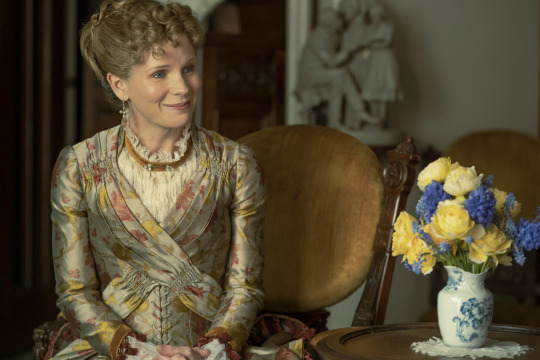
One of Broadway's (few) leading sopranos, Kelli O'Hara is a dying breed. As trends shift towards a more pop/rock sound, and classical musical theatre becomes a thing of the past, Kelli nevertheless finds her niche. A seven-time Tony nominee, Kelli has won Best Leading Actress in a Musical for the 2015 revival of The King and I. You'll recall another Gilded Age Diva who won for that same role some years prior. A proshot of the NT Live production can be found online. It is a gorgeous shoot, even if I take issue with that show as a whole.
She has also been nominated for Kiss Me, Kate (2019), The Bridges of Madison County (2014), and The Light in the Piazza (2005). Ironically, though Aurora Fane supports The Academy, Kelli is a classically trained opera singer who has appeared on the Met Opera stage three times, and will play Laura Brown in an encore run of The Hours this spring. (See my breakdown post over costumes here.)
However, prior to her opera appearance, Kelli will be starring in the new Broadway musical Days of Wine and Roses for a limited 16-week run, opening on January 28th. Kelli has been nominated for every role she has played since 2005, and this will almost certainly be no different. Booked and busy.
#1: "Shall We Dance?" The King and I (2015)
youtube
Kelli's voice is otherworldly angelic. That much we already know very well. The King and I opened in 2015 at the Vivian Beaumont Theatre at Lincoln Center, the third musical Kelli has starred in at that venue. The Beaumont is, of course, right next to The Met Opera, and the only Broadway theater outside the theatre district in Midtown.
As Anna Leonowens, Kelli travels to Siam to teach the children and wives of the king how to speak English. Orientalism aside, the show is a classic Rodgers and Hammerstein, and the score is divine in Kelli's mouth. Fun fact: Kelli's replacement was Marin Mazzie in one of her last onstage roles. Marin was the Passion co-star and dear friend to Donna Murphy, our Mrs. Astor.
This video is from the 2015 Tony performance and showcases the incredible quick change Kelli makes between singing "Getting to Know You" and "Shall We Dance?" aided by a team of unbelievable dressers. It is a marvel to witness. As is Ruthie Ann Miles, Kelli's co-star who recently performed in the Encores! production of Light in the Piazza.
#2: "What More Do I Need?" Take Me to the World: A Sondheim 90th Birthday Celebration (2020)
youtube
In 2020, despite a global pandemic, the theatre community still found a way to honor Stephen Sondheim's milestone 90th birthday with an online concert. Kelli performed a song from Saturday Night, Sondheim's first professional musical that was slated for Broadway in 1955, but was scrapped. It only got its New York premiere in 2000. This particular number is a cabaret favorite, and Kelli is an absolute delight with just a camera and digital accompaniment.
Fun fact: it wasn't until this particular performance that I truly started to appreciate the wonder that is Kelli O'Hara. I had previously seen her in concert just that March, and loved her, of course, but I have a complex relationships with sopranos. I now recognize that I love mature sopranos, but it's the ingenues I can't listen to without wincing.
#3: "They Don't Let You In the Opera" (2016)
youtube
Lest we think Kelli is limited in her range and style, this song was written especially for her to showcase her vast talent and comedic timing. Kelli, an Oklahoma farmgirl, isn't the sort of person you'd expect to be both classically trained and country literate.
Kelli, who has been typecast as refined and often repressed characters who go through harrowing emotional experiences, much like Aurora Fane, is more than capable of bringing a rollicking comedy to the mix.
This number is a favorite in Kelli's concert repertoire. There isn't much more to say, except that you need to witness its hilarity for yourself.
#4: “Heaven? Somebody else’s heaven?” The Hours (2023)
youtube
Speaking of opera, here is an excerpt from a scene in Act II where Laura Brown has fled to a hotel room to contemplate some very serious courses of action. Kelli, alongside soprano Renee Fleming and mezzo-soprano Joyce DiDonato, makes up a trio of phenomenal women in Kevin Putts' adaptation of the book and movie.
The Met Opera theatre seats nearly 4,000 people across six levels. The performers do not use body mics or amplification of any kind, but rather rely on intense vocal training to be heard across the theater. For this reason, alongside the vastly different vocal techniques and styles, musical theatre actors rarely cross over into opera, and vice versa. Notable exceptions include Renee Fleming, Kelli's Light in the Piazza co-star Victoria Clark, and Mary Beth Peil, who made her musical theatre debut in The King and I as yet another Miss Anna, hers in 1985.
#5: "So in Love," Kiss Me, Kate (2019)
youtube
Starring in yet another Golden Age musical revival, Kelli brings a different take on Lilli Vanessi, a glamorous movie star in a turbulent relationship. Kelli's vocal talent, of course, speaks for itself. For Kelli, this role was a tribute to her dear friend, the late Marin Mazzie, who had passed away some months before the show opened. Marin, who replaced Kelli in The King and I, had played this same role in the 1999 Broadway revival to great acclaim. In her first entrance of the show, Kelli wore a costume that featured the very same hat Marin wore in her show.
Though this video is beloved, my personal favorite rendition can be heard below. It was taken at a concert Kelli put on at the 92Y in New York last February. In it, Kelli sings for and to Marin, and the entire theatre wept.
Bonus: "Back to Before," Ragtime Reunion Concert (2023)

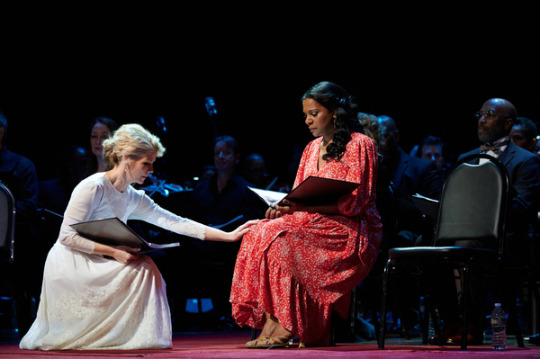
The role of Mother was originally workshopped by Donna Murphy in Toronto in the early 90s, but she left to do King and I, which worked out well for her. In came dear friend Marin Mazzie, who originated the role on Broadway, and established a precedent no other has been able to top. Also in that cast? Audra McDonald as Sarah, for which she won a Tony, of course.
In 2023, after years of pandemic-related delays, they staged a one-night reunion concert of this special show. And who better to take on Marin's iconic role than Kelli O'Hara? Listen to her "Back to Before" here, and then do yourself a favor and run, don't walk, to listen to Marin's.
#the gilded age#aurora fane#kelli o'hara#met opera#sondheim#ragtime#marin mazzie#kiss me kate#the hours#the king and i
22 notes
·
View notes
Text
Ranking of "THE GILDED AGE" Season Two (2023) Episodes
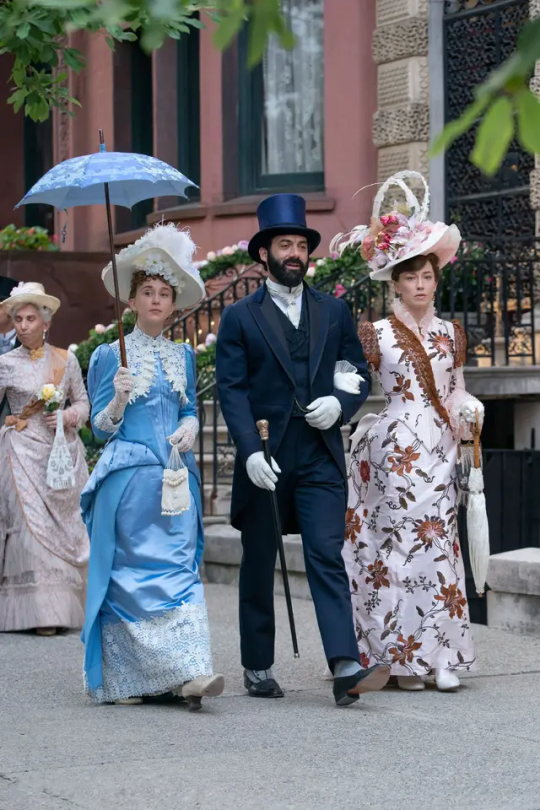
Below is my ranking of the Season Two episodes from the HBO historical drama, "THE GILDED AGE". Created by Julian Fellowes, the series stars Christine Baranski, Carrie Coon, Morgan Spector and Cynthia Nixon:
RANKING OF "THE GILDED AGE" SEASON TWO (2023) EPISODES

1. (2.05) "Close Enough to Touch" - Socialite Bertha Russell makes final preparations for the societal event of the summer season with a dinner to honor the Duke of Buckingham in Newport. Peggy Scott and her employer T. Thomas Fortune encounter hostile whites at a black-owned restaurant, while covering a story in Tuskagee, Alabama. And Ada Brook finally marries her new beau, the Reverend Luke Forte, despite the disapproval of her older sister, socialite Agnes van Rhijn.

2. (2.03) "Head to Head" - The Opera war between Bertha and Mrs. Caroline Astor escalates. At Bertha's fundraiser, a surprise guest in the form of Bertha's former maid, now socialite Mrs. Enid Winterton, reveals an unpleasant secret regarding her husband, George Russell. Peggy offers to join Fortune in covering the new dormitory story at the Tuskegee Institute. And George attempts to woo union leader Mr. Henderson.
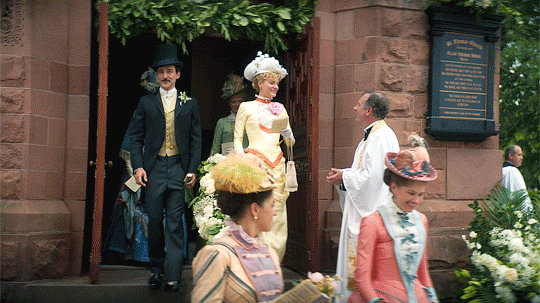
3. (2.01) "You Don't Even Like the Opera" - In the season premiere, the Scotts visit Philadelphia to attend an Easter memorial service for Peggy's dead son, who had ended up adopted. Ada meets Luke Forte for the first time following Easter service. And after being snubbed by Mrs. Astor's opera community, Bertha decides to support the new Metropolitan Opera over the senior Academy of Music.
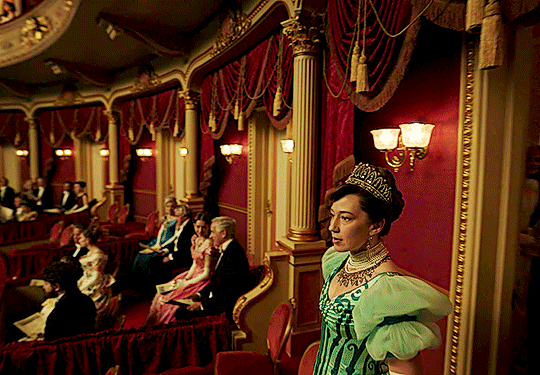
4. (2.08) "In Terms of Winning and Losing" - In the season finale, the fate of the van Rhijn household is uncertain after Oscar van Rhijn loses his family's fortune to a con artist. Footman Jack Trotter's alarm clock patent is approved. Arthur Scott thwarts the New York Educational Board's secret attempt to close African-American schools. Later, Peggy decides to end her employment with The New York Globe, wary of her attraction to the married Mr. Fortune. Marian Brook decides to end her whirlwind engagement to Agnes' nephew by marriage, the wealthy Dashiell Montgomery. And the Duke of Buckingham becomes the pivotal figure in the Opera war between Bertha and Mrs. Astor.

5. (2.07) "Wonders Never Cease" - New York City citizens celebrate the final construction of the new Brooklyn Bridge. Marian harbors doubts about her engagement to Dashiell. Oscar discovers that Miss Beaton, the young socialite he had hoped to marry, is a con artist who had tricked him of most of the van Rhijn money. The van Rhijn-Forte household suffers a personal tragedy.

6. (2.04) "His Grace the Duke" - Bertha discovers the funding for the unfinished Metropolitan Opera House has run out. Ada fears Agnes will disapprove of her meetings with Reverend Forte. Peggy and Mr. Fortune travel to Tuskegee. Bertha insinuates herself with the Duke of Buckingham at a dinner held by her former maid, the socialite Mrs. Enid Winterton. George and other business owners conspire to subvert impending labor strikes. And Bertha forces Larry's new lover to end their romance.

7. (2.06) "Warning Shots" - Mrs. Winterton demands Bertha's center box at the Met in exchange for her support. Peggy asks Mr. Fortune to investigate the New York Education Board's decision to close the Black schools. Reverend Forte receives unpleasant news, following his and Ada's honeymoon. George and a number of military soldiers face striking workers at his Pittsburgh steel plant. And Marian receives a surprising, yet very public marriage proposal.

8. (2.02) "Some Sort of Trick" - To escape the tense atmosphere at her parents' Brooklyn home, Peggy rejoins the van Rhijn household as Agnes' secretary. Both Peggy and Agnes warn the latter's maid Armstrong to treat the former with more respect. Gladys Russell put an end to Oscar's pursuit of her with a rejection of his marriage proposal. Her brother, the newly architect Larry Russell, becomes romantically involved with his new client, a woman twice his age. The Russells discover that Bertha's former maid has married a wealthy elderly member of New York society.
#the gilded age#the gilded age hbo#the gilded age season 2#christine baranski#cynthia nixon#denee benton#louisa jacobson#morgan spector#carrie coon#harry richardson#audra mcdonald#john douglas thompson#blake ritson#kelley curran#ang lee#simon jones#sullivan jones#taissa farmiga#nathan lane#kelli o'hara#brooklyn bridge#opera war#robert sean leonard#jack gilpin#debra monk#kristine nielsen#douglas sills#patrick page#michael cerveris#celia keenan-bolger
4 notes
·
View notes
Text
Power of Three: Enrollment
Three weapons, fresh from the forge. Gifts for the new class leaders. They had been sent out and the class leaders had been told to show them at the academy gates as proof of their identity. And now, Archbishop Byleth figured, he could keep a close eye on the three in this lovely weather during lunch.
Astor was guarding his sandwich, subtly, but it wasn't fooling the twins. Collin blinked at him. “Your Imperial Highness? When I talked about the lava butt powder my dad used to use, I didn't mean I had any with me.”
“You can seriously, just, stop that now.” Giselle added. “Look, I'll even go try out my cool new bow later, and hunt some wild game, and you can have it cooked and prepared the way you like it.”
“I want to hunt!” Kion perked up. “How about we all go?”
Astor wrinkled his nose. “I have never hunted before in my life.”
“Not too late to start.” Leah, Kion's sister, admired the three gift weapons. The Antler Recurve for Giselle, an ornate bow. The Fang Pike for Kion, a heavy, yet graceful lance. And the Talon Maul for Astor, a fancy mace style axe.
“No.” Astor scoffed. “I am an Imperial prince. You are all nobility as well. We do not need to hunt for ourselves.”
Collin scratched the back of his neck before leaning closer to Astor. “Buddy, my sister is trying to be decent. Also, she's a great huntress. Any kind of meat you want out of the woods, she can get it for you.”
Kion changed the subject. “So. You two are twins. How was it decided who was going to be leader of the Golden Deer House?”
“We once spent nine months sparring for the right and she kicked me in the head until I told her she won.” Collin joked.
Giselle rolled her eyes. “Well, I suppose that's not too inaccurate. He's always been the follower out of us. He's got the leadership skills of a squirrel on a sugar rush.”
Kion laughed. Astor cracked a small smile.
“I wish I was a twin.” Leah said. “Then maybe I'd be the Blue Lions leader.”
“You're doing great just how you are.” Kion patted his sister's shoulder.
4 notes
·
View notes
Text
youtube
The Gilded Age Season 2 | Official Trailer | HBO
Season two of THE GILDED AGE begins on Easter morning 1883, with the news that Bertha Russell's bid for a box at the Academy of Music has been rejected. Through the eight episodes of the season, we watch as Bertha challenges Mrs. Astor and the old system and works to not only gain a foothold in Society, but to potentially take a leading role in it. George Russell takes on his own battle with a growing union at his steel plant in Pittsburgh. In the Brook House, Marian continues her journey to find her way in the world secretly teaching at a girls school while much to everyone’s surprise Ada begins a new courtship. Of course, Agnes approves of none of it. In Brooklyn, the Scott family begins to heal from a shocking discovery, and Peggy taps into her activist spirit through her work with T. Thomas Fortune at the NY Globe.
From creator Julian Fellowes (“Downton Abbey”), the new season of The Gilded Age will be available to on October 29, only on Max.
#The Gilded Age#Denée Benton#Audra McDonald#Carrie Coon#Morgan Spector#Louisa Jacobson#Taissa Farmiga#T. Thomas Fortune#Sullivan Jones#series trailer#period series#Julian Fellowes#Youtube
17 notes
·
View notes
Text



Cha-Cha || The Handler || Hazel
~ Three of The Temp Commission's Deadliest employees ~

Indi Rp blog for Cha-Cha, The Handler and Hazel from the Netflix adaptation of The Umbrella Academy, also featuring TUA OCs Bonnie Astor (info found here) and Lucinda Moore (info found here), as written by Pip (they/them) (25 yrs old). Portrayal based on a combination of cannon and headcannons; always down to write some cannon divergent verses or AUs as well. OC & multifandom friendly.
The writing on this blog will contain dark themes and subject matter at times so any potentially triggering content will be tagged as ( TW: [topic] ). And of course, if I miss anything that y'all would like tagged in that manner please don't hesitate to hop into my messages and let me know!
I can be a slow replier at times so though I'd clarify that this doesn’t mean I’m not interested in continuing threads! I just sometimes have to battle my brain to convince it to focus on anything at all haha!
And my dms are always open for plotting and chatting should any of you lovelies want to <3
Open Starters | Tag Dictionary | Divder Credit
5 notes
·
View notes
Text
The season 2 finale of The Gilded Age brought many of the show's central conflicts to a head, including whether or not The Academy or the Met would win the opera war, who the Duke of Buckingham (Ben Lamb) would choose, whether Armstrong (Debra Monk) would ever stop being a pill — and most importantly, if Larry Russell (Harry Richardson) and Marian Brook (Louisa Jacobson) would ever get together.
The moment finally arrived in the season's final scenes, and it wasn't a mere chaste brush of a gloved hand either. Standing on the doorstep of the Van Rhijn household, Larry walked Marian home from a night at the opera in the early light of dawn. She promised that even with a move on the horizon, she would keep in touch with Larry. Larry's response was to kiss her, drawing a shy, pleased smile from Marian.
Executive producer and writer Sonja Warfield tells EW that the romantic moment came after she directly solicited creator Julian Fellowes. "Julian had long game plans to get them together," she says. "Back then everything was very chaste. You didn't really kiss somebody; you shook hands or something like that. So, I really did want Marian and Larry to kiss and asked Julian if they could please kiss at the end of the season. He granted me my wish."
Though Warfield warns that if they do secure a season 3 (HBO has yet to order more of The Gilded Age), it won't just be smooth sailing through the tunnel of love. Even if Marian will now have a newly empowered Ada (Cynthia Nixon) on her side against what will no doubt be objections from Agnes (Christine Baranski). "Relationships had their challenges in 1884, and they do today," she says. "The modern challenges aren't that different from those challenges. Yes, we're rooting for them. But everything will be complicated."
EW got Warfield to break down more of the finale, including Peggy's (Denée Benton) decision to leave the paper, Ada's sudden new wealth and its implications, and the possibility that Bertha Russell (Carrie Coon) has sold her daughter, Gladys (Taissa Farmiga), to a duke solely to win a society war with Mrs. Astor (Donna Murphy).
ENTERTAINMENT WEEKLY: You all brought Ada some romance this year, only to immediately kill off poor Luke (Robert Sean Leonard). So, I have to ask, why are you so mean?
SONJA WARFIELD: Because that's drama. And back then, most of the time when people had an ache or a pain, it did mean death. I wanted to disrupt the status quo with Ada. I just adore Cynthia Nixon, and her performance was mesmerizing to me, so I wanted her to be empowered to have a love. Agnes is oppressive, and so, I wanted for her to have love and to feel loved and to understand how that helped her in the world. The heart of the show, it's about the warring classes and Ada and Agnes represent that old money, and so, they need to remain intact. That's why he couldn't stay.
Peggy decides to leave the Fortune (Sullivan Jones) paper. What will that mean for her future? She talks about a novel, but being a journalist seems like such a core part of her identity right now.
In that time period, a lot of women were writing serialized stories for newspapers, so Peggy's done some of that too. There's versatility in her writing and in her work. Listen, Fortune is great, but he's a bad influence. He drinks a little bit; he's married. Peggy has a whole future ahead of her anywhere she wants to be. So I'm excited for her.
Will she be able to stay away though?
We shall see. He is pretty cute.
Watson (Michael Cerveris) gets this happy ending where he's going to actually go and have a life with his daughter. Will we continue to follow him and how that develops in the future? Or once he leaves the Russell household, will we not really check in with him?
Now, he's going to be living as a gentleman. We've already seen Turner (Kelley Curran) cross over. Anything's possible in America at that time.
Speaking of Turner, we learn in the climax of the finale that both Bertha and George did her dirty behind the scenes, both with the opera box and learning that Bertha wrote Mrs. Astor to get the new Mrs. Winterton kicked out of the Academy. If there is a season 3, how might that come back to bite them?
Listen, she'll be conniving to take Bertha down. Turner, or Mrs. Winterton, will be in her orbit. There are crimes of opportunity that Turner will be looking out for wherever she can catch Bertha out. And remember, she was the maid and the maids know everything.
One has to assume she already is blaming the Russells for everything.
Oh, absolutely. She's a smart cookie. She knows what's going on.
Season 1 ended with this very short-lived triumph for Bertha with her party coming off. But it wasn't enough. If there is a season 3, would that be similar? She won this battle. Are there more battles for her to win?
The thing about power is that it's unquenchable. You get a taste of it, and you thirst for more. Bertha has her sights set on conquering American society.
There is a heavy implication that Bertha won the Duke of Buckingham by selling out her own daughter. Is that a fair reading of that scenario?
I think you're a smart woman and that's an astute reading. Sadly.
George also looks quite concerned with whatever might be happening with the Duke. And we did see him early in the season pledge that he was supportive of Gladys marrying someone she actually loves. So is he also suspicious? Is he still determined to stand firm to that promise?
That's something that will be tested, and we'll have to see where George and Bertha land. This season was great because we saw them, probably for the first time with their marriage, in some real jeopardy that they had not experienced before. What I loved about that is that they still emerged as this power couple, and so we'll see if they can sustain that and how much their marriage can take. Parents often want different things for their children and that can be challenging.
We've really seen the servants branch out a lot more this season, whether that be going to the opera or this overarching plot line with the alarm clock. Are we trending toward a situation conceivably where servants are leaving their profession or their power dynamic is in flux?
That's the difference between America and the U.K. You're born into a position there, but in America it's supposedly the land of opportunity. Turner married up; we'll have to see what happens with Jack and how he fits into this new world, or if he gravitates back to his old world and what really happens with it. Businesses go bust, anything's possible.
We've pretty much exclusively seen Larry interested in architecture to this point. So what would going into the alarm clock business potentially look like for him?
Money. He's young and he gets to explore a lot of things because his father's a mogul.
In the final moment, Ada warns Agnes that things might be a little different. Historically, Ada is pretty good natured. So her being in charge, what do you conceive that looking like? I feel like we're gearing up for the battle of the century between these two sisters.
Here's the thing, fighting with a sibling is so different than fighting with somebody else. You can go in and you can go deep and you can go back. It's so charged and it's so conflict ridden. At the same time, you can be at each other's throats and then the next minute, you can hug it out. What I love is that Ada didn't just get a lot of money. She was really empowered to be independent with Luke in that relationship. So the power dynamics, it'll be fun to watch what happens.
Does she hold any resentment toward Agnes for how domineering she was that we could see come out?
Listen, Agnes pushes people. Even if you were forgiving and didn't have resentment, she might stir it up again.
This cast is known for its stellar lineup of Broadway talent. Who would be your dream to join the cast next season?
Sutton Foster. That would be big fun.
17 notes
·
View notes
Text
Mary Astor - The Cameo Girl

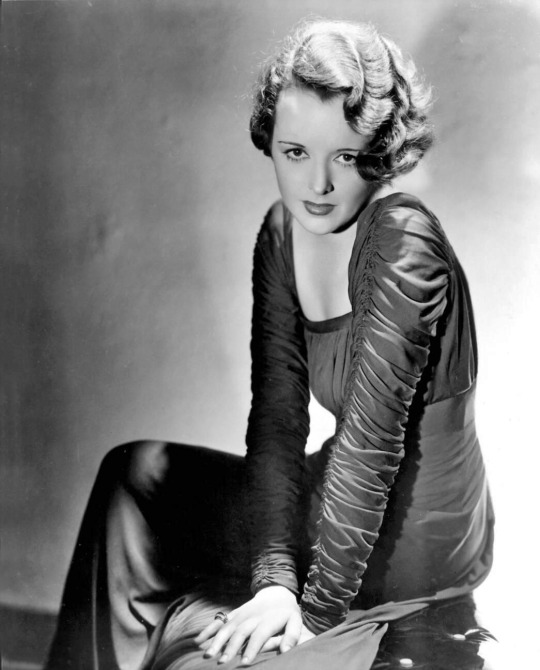
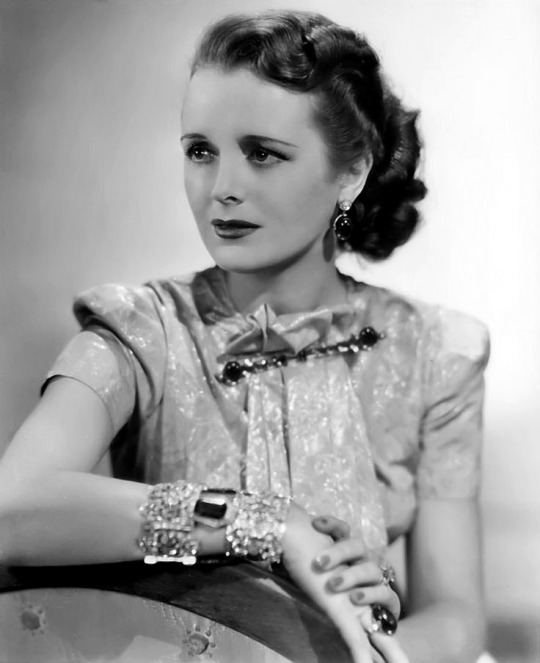
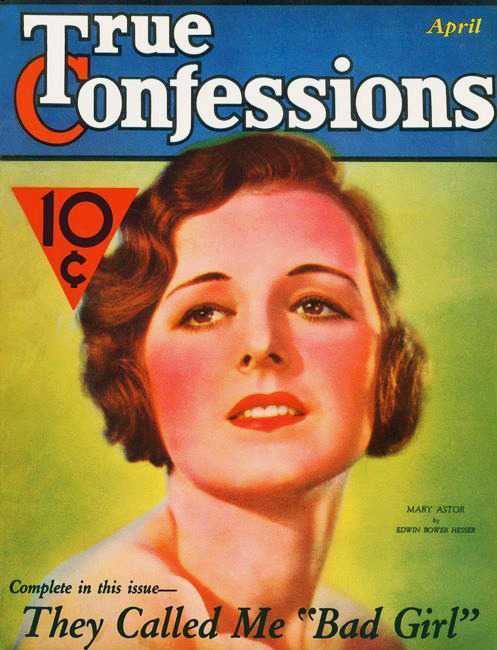
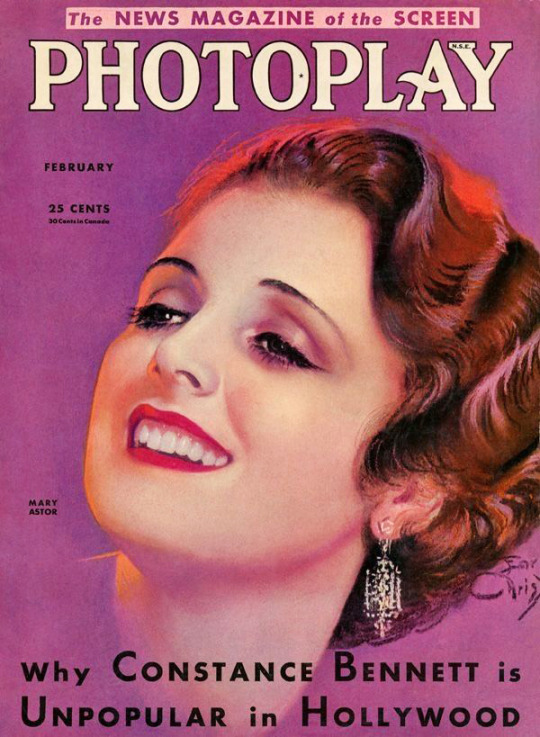
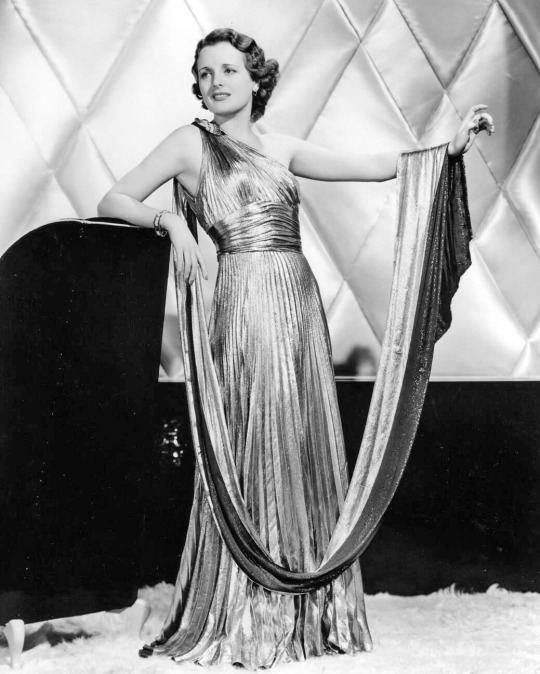
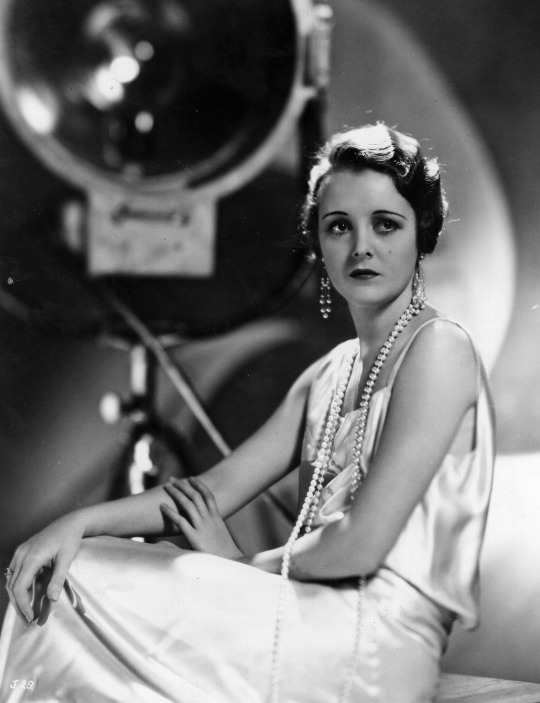
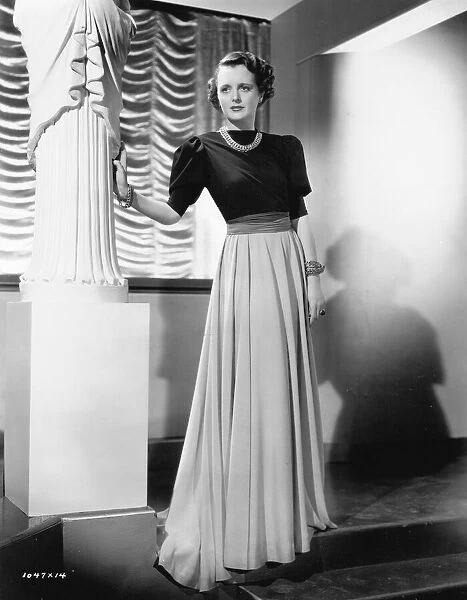



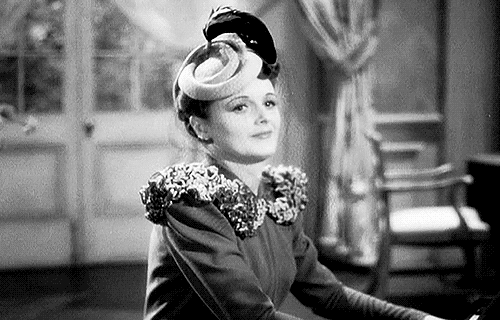
Mary Astor (born Lucile Vasconcellos Langhanke in Quincy, Illinois on May 3, 1906) was an American actress of German and Portuguese ethnicity. She was noted for her classic beauty and a renowned profile that earned her the nickname “The Cameo Girl.”
Recognizing her beauty, her parents pushed her into various beauty contests. Luck arrived when she became a runner-up in one of Motion Picture Magazine's photography contests and came to the attention of Harry Durant of Famous Players–Lasky, who helped her get her first Hollywood contract with Paramount in 1920.
Contracts with Warner Bros. and Metro-Goldwyn-Mayer followed, and she worked in film, television, and on stage until her retirement in 1964. She also had a respectable career as a writer. Her 1959 autobiography Mary Astor: My Story was one of the first confessional autobiographies to come out of Hollywood.
Although her career spanned over four decades, she is best remembered for her performance as Brigid O'Shaughnessy in The Maltese Falcon (1941) and concert pianist Sandra Kovak in The Great Lie (1941).
After her retirement in 1964, Astor lived the final years of her life as a resident of the Motion Picture Country House in Woodland Hills, Los Angeles where she succumbed to the effects of respiratory failure due to pulmonary emphysema at the age of 81.
Legacy:
Named as one of the WAMPAS Baby Stars in 1926
Won the Academy Award for Best Supporting Actress in 1941 for The Great Lie (1941)
Awarded Best Acting by the National Board Review in 1941
Won the Photoplay Awards - Best Performances of the Month for January 1942 for The Great Lie (1941) and The Maltese Falcon (1941)
Authored two best-selling books of memoirs, Mary Astor: My Story (1959) and A Life on Film (1971) as well as five fictional novels
Honored as Turner Classic Movies Star of the Month in March 2014
Has a star on the Hollywood Walk of Fame at 6701 Hollywood Blvd for motion picture
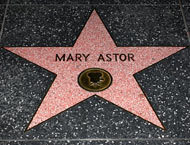
#Mary Astor#The Cameo Girl#The Maltese Falcon#Silent Films#Silent Era#Silent Film Stars#Golden Age of Hollywood#Classic Hollywood#Film Classics#Old Hollywood#Vintage Hollywood#Hollywood#Movie Star#Hollywood Walk of Fame#Walk of Fame#Movie Legends#hollywood legend#movie stars#1900s#28 Hollywood Legends Born in the 1900s
9 notes
·
View notes